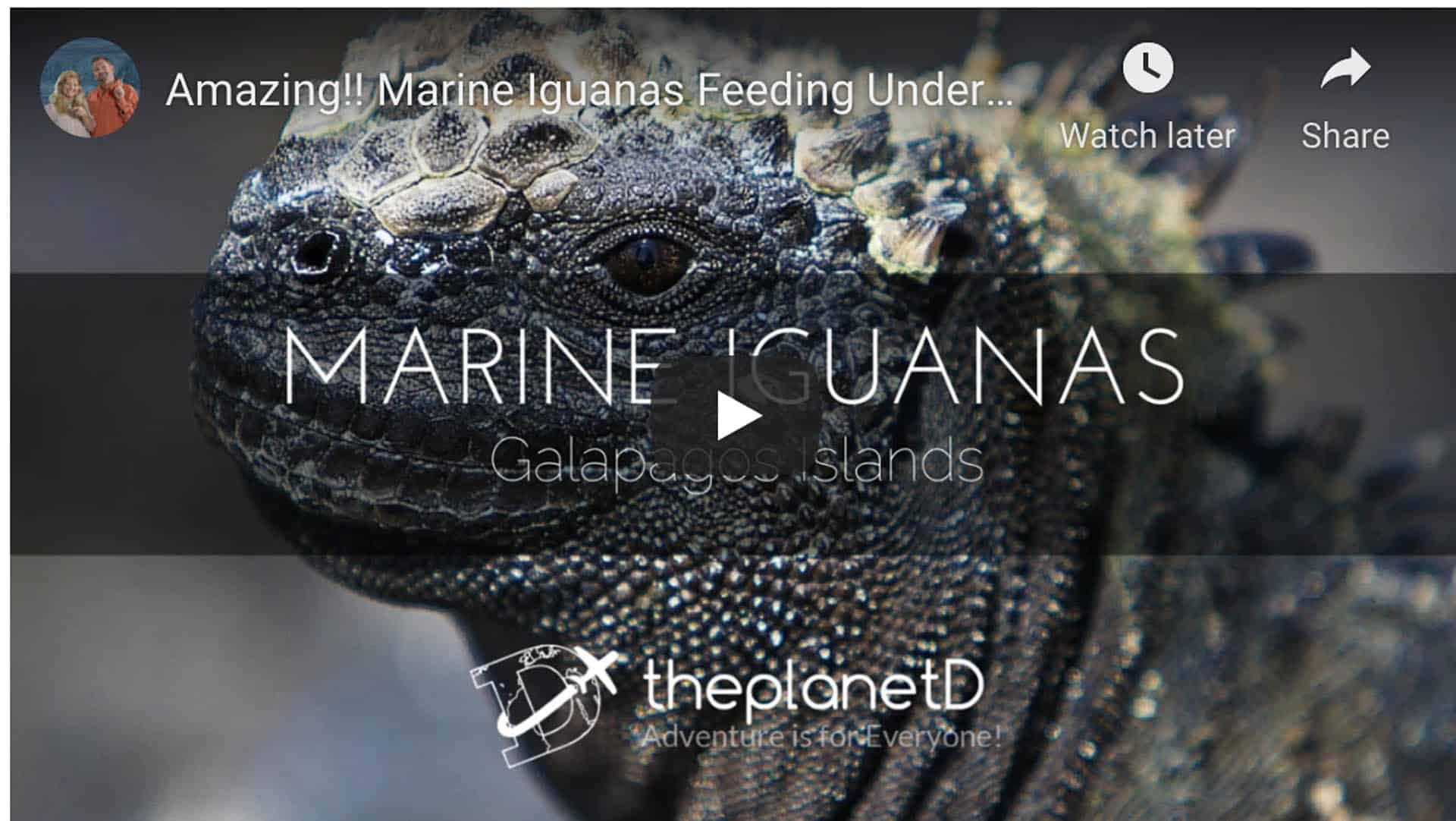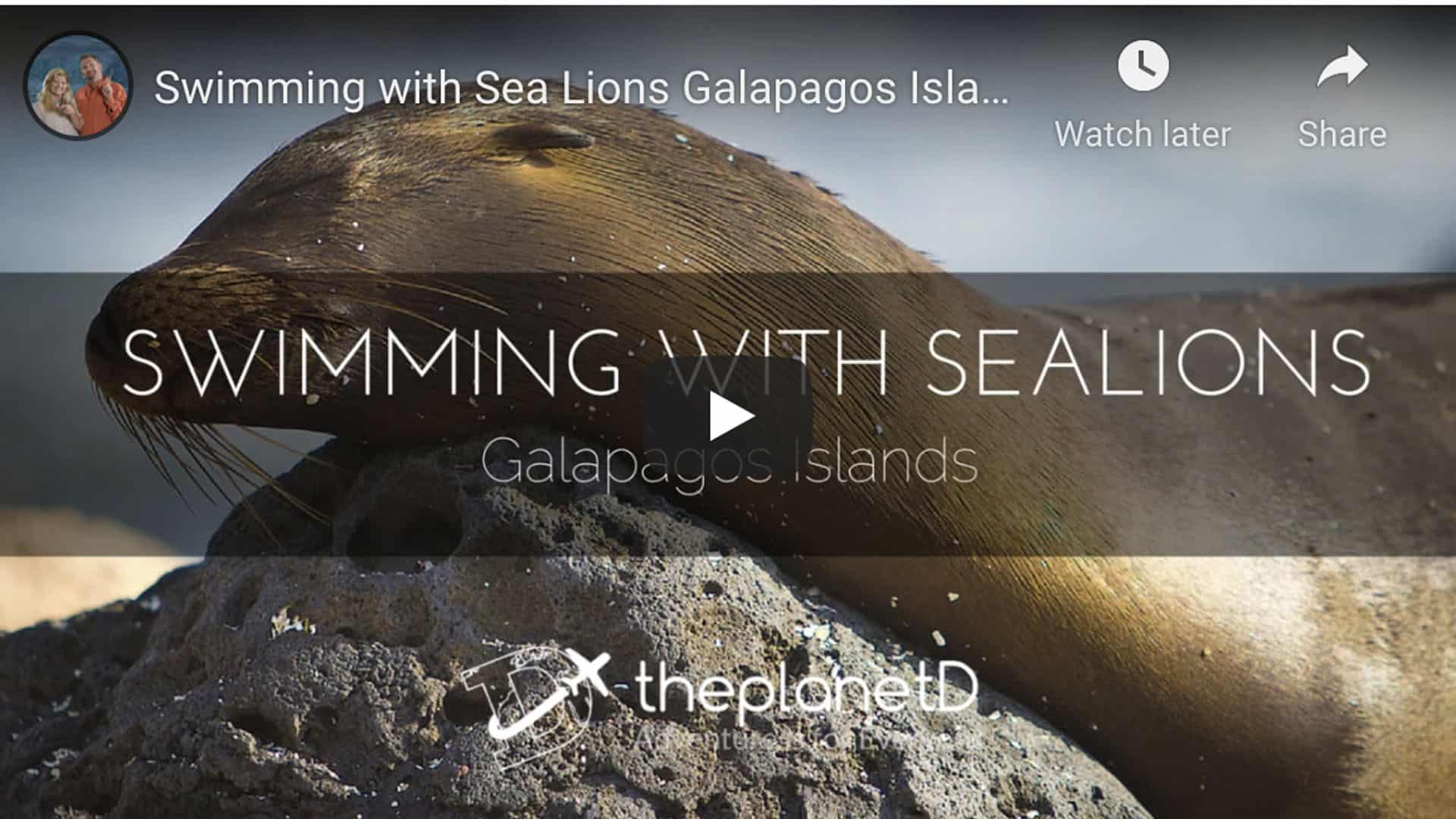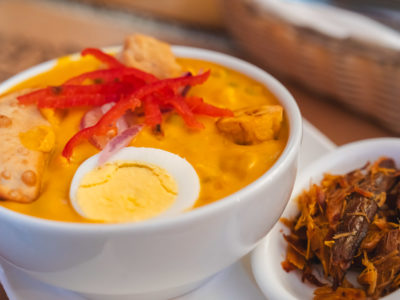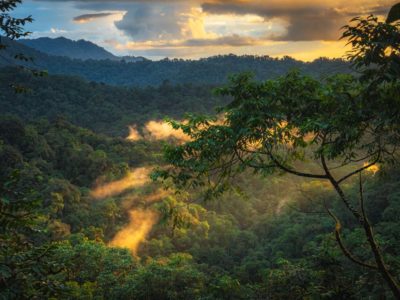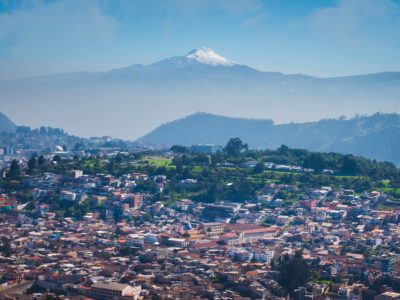What makes the Galapagos Islands so special to visit? The animals of course! The animals in the Galapagos Islands are part of a unique ecosystem that houses species endemic only to the islands.
It was Charles Darwin who brought the Galapagos animals to the world’s attention when he joined Captain Fitzroy on the HMS Beagle on a five-year journey around the world. The unique ecosystem of the Galapagos helped him eventually develop his theory of evolution through natural selection.
Table of Contents
Unique Galapagos Animals
When visiting the Galapagos, we saw many bird species, land mammals, and marine life that are completely unique to the islands. Because of the remoteness of the islands, these animals have adapted perfectly to their environments.
There are more than 200 species of animals in the Galapagos islands with most being different species of birds, followed by reptiles, marine life, and finally mammals.
The journey the animals had to endure over open waters to get to the islands, explains the lack of actual mammals on the islands. Out of the 200+ animal species, only 32 species of animals of the Galapagos are mammals.
About Galapagos Wildlife
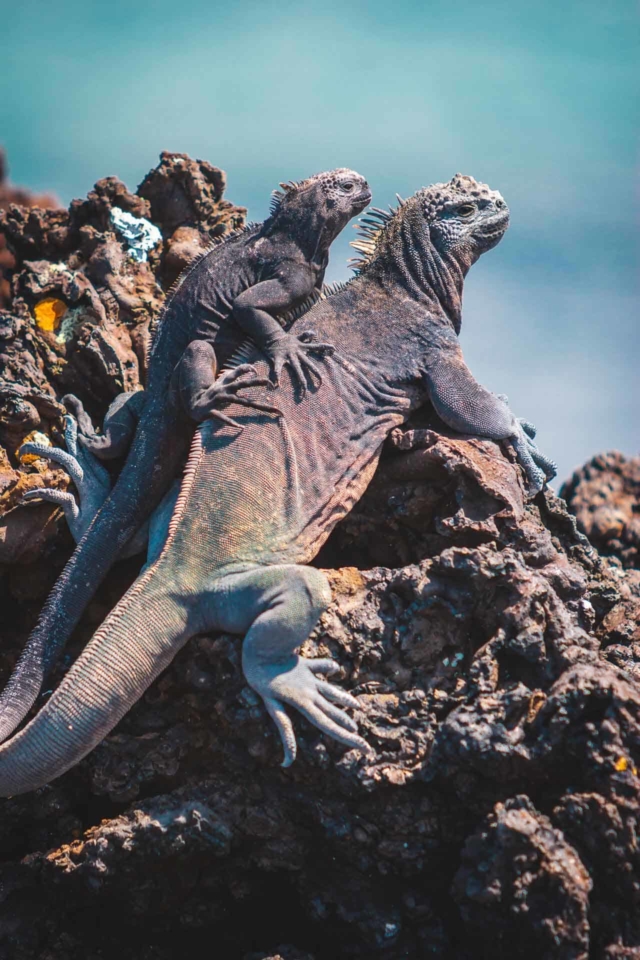
How Did the Animals Get to the Galapagos Islands? It is believed that the animals were brought to the Galapagos by wind and water currents. Birds, seals, turtles, and penguins arrived while being swept away from their paths during migration, and through sheer willpower made it to its shores to continue to thrive and survive on the Galapagos Islands.
Some animals (land mammals) are believed to have come on vegetation rafts. It’s an enormous feat when you think about it. They had to survive for weeks at sea without food, water, or shelter. The conditions they faced on their historic journeys from the mainland have helped them to adapt to the harsh environment and climate of the Galapagos.
Unique Galapagos Animals
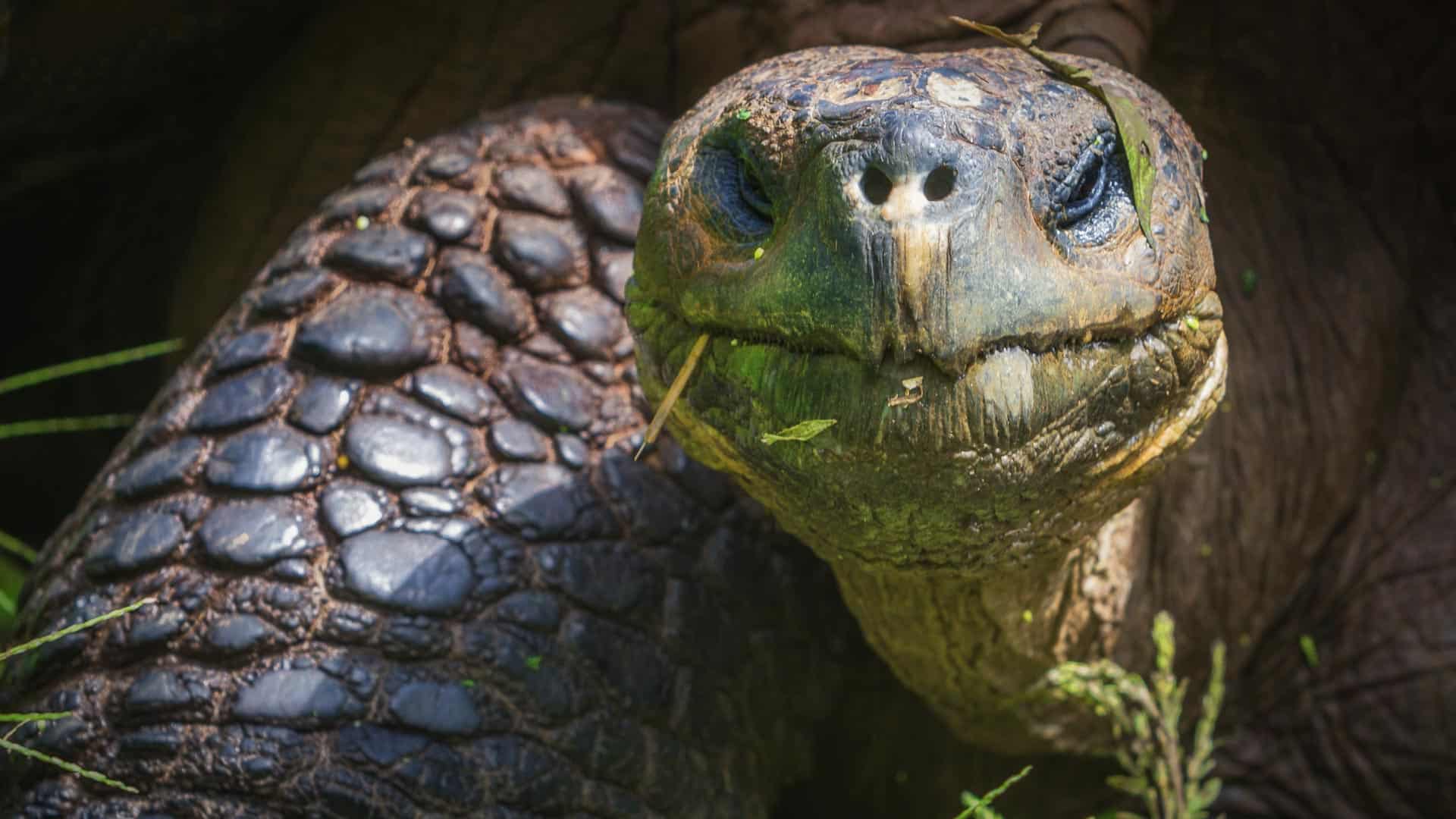
We traveled through several of the 13 major islands of the Galapagos and saw many different species throughout our journey. These are the most outstanding animals of the Galapagos.
As we toured the Galapagos, we became more fascinated by its history and evolution and could completely understand why Charles Darwin was mesmerized by this UNESCO World Heritage Site. So let us take you on a photo journey of the most beautiful Galapagos Island animals.
Galapagos Tortoise
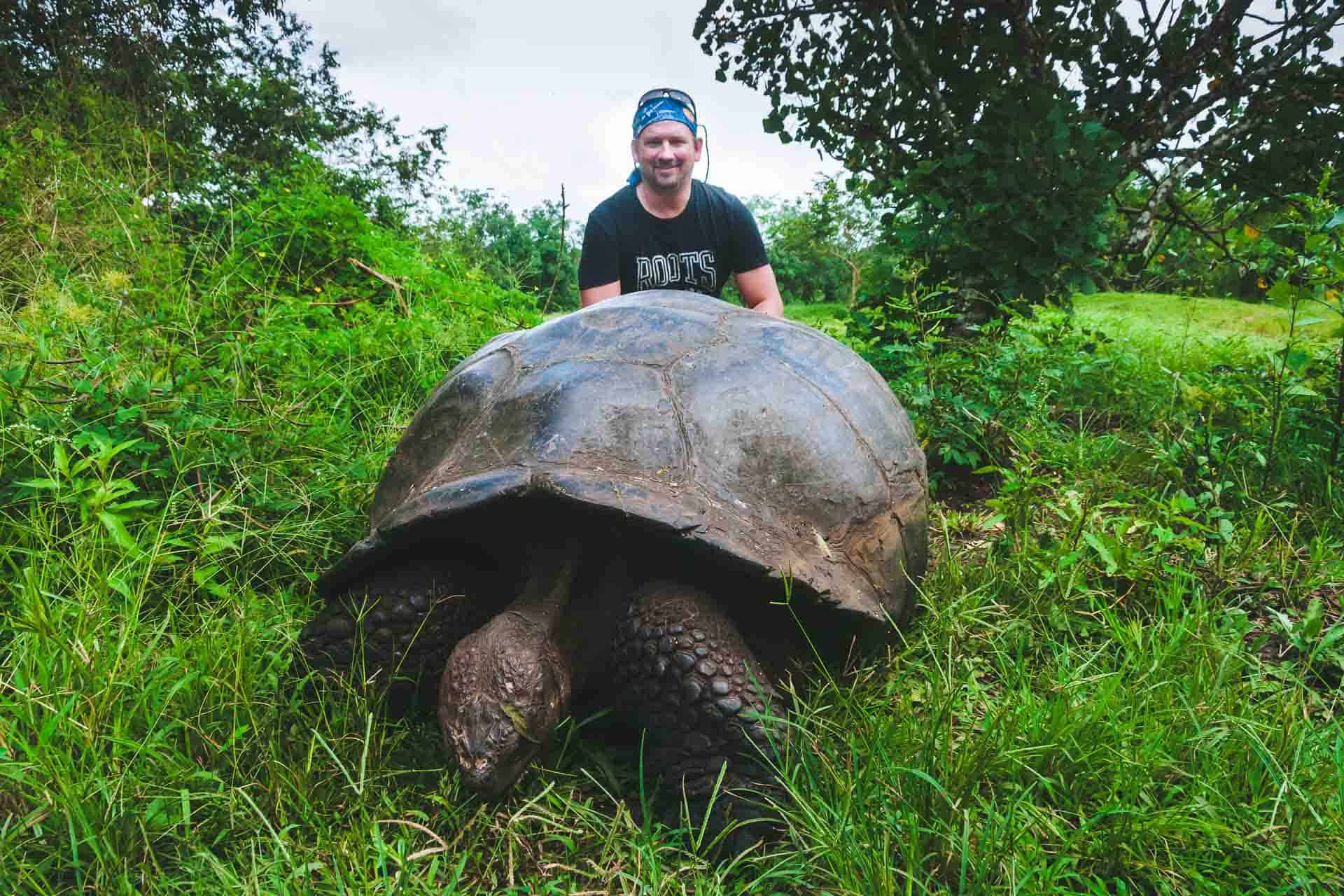
The Galapagos Giant Tortoises are by far the star attraction of the Galapagos. These gentle giants are massive. The Galapagos giant tortoises can live to more than 100 years old and grow to more than 500 lbs in weight.
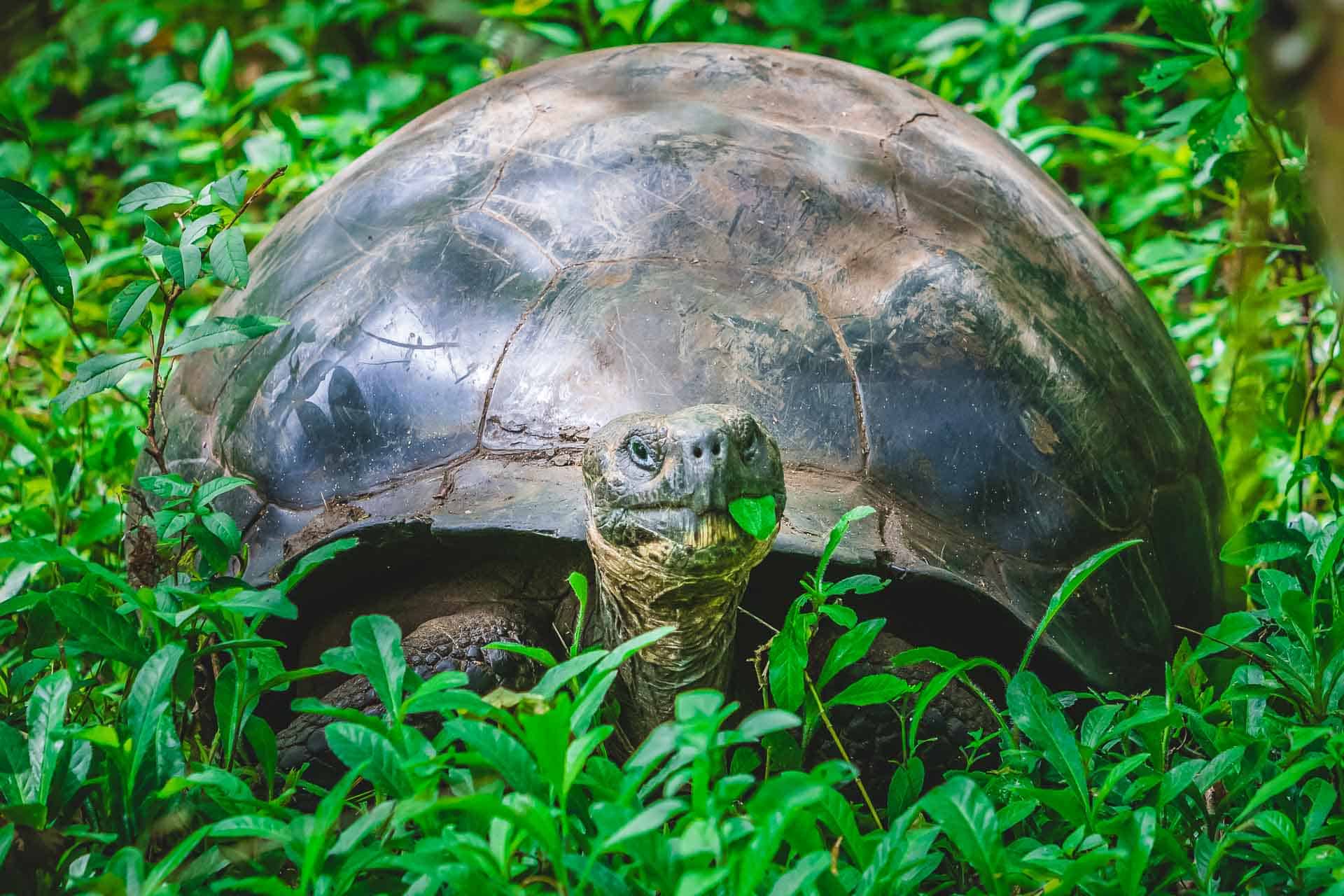
Nearly hunted to extinction thanks to the invasion of humans in the 16th century the population dwindled to less than 3000. Four of the Giant species are completely extinct and the rest are on the endangered species list. But conservation efforts are now taking place with breeding programs.
Giant Tortoise Breeding Centre
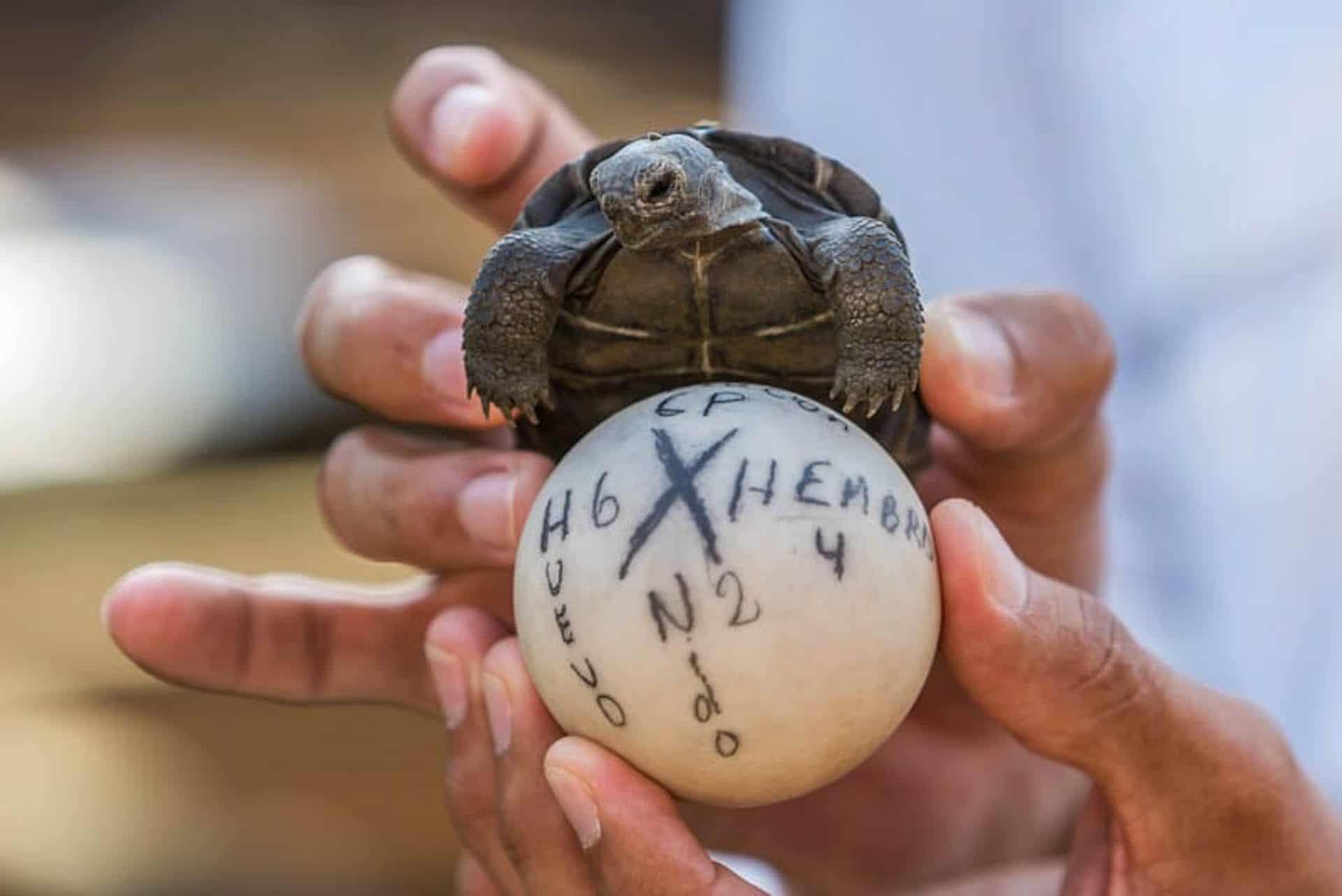
Santa Cruz is a must stop as it is home to the Charles Darwin Research Station and Giant Tortoise Breeding Centre
Blue Footed Booby
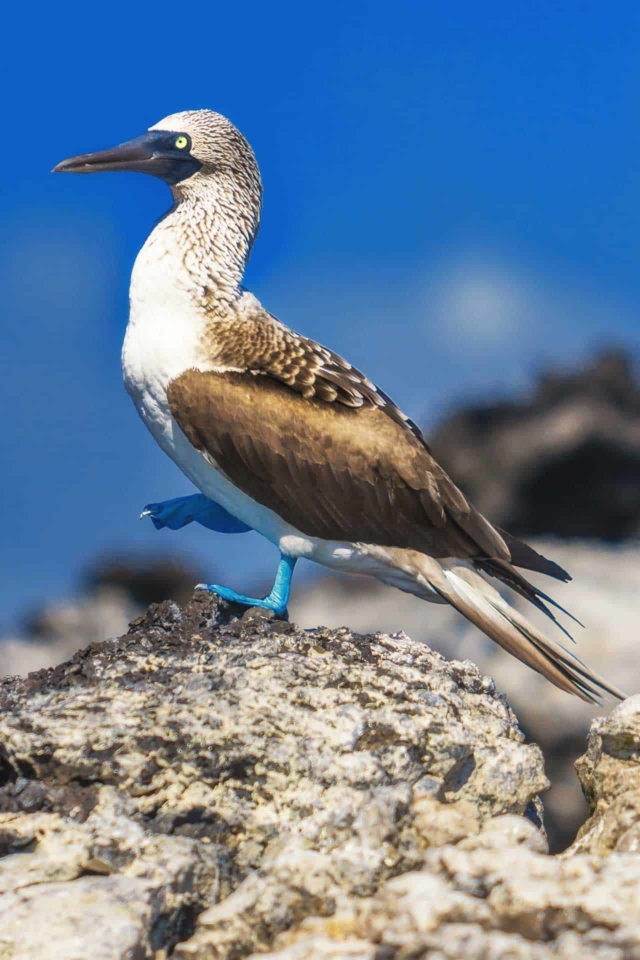
One of the cutest birds in the Galapagos is the Blue-Footed Booby. While we have seen the blue footed booby in other parts of the Pacific Ocean they are plentiful in the Galapagos with half the breeding population nesting in the Galapagos.
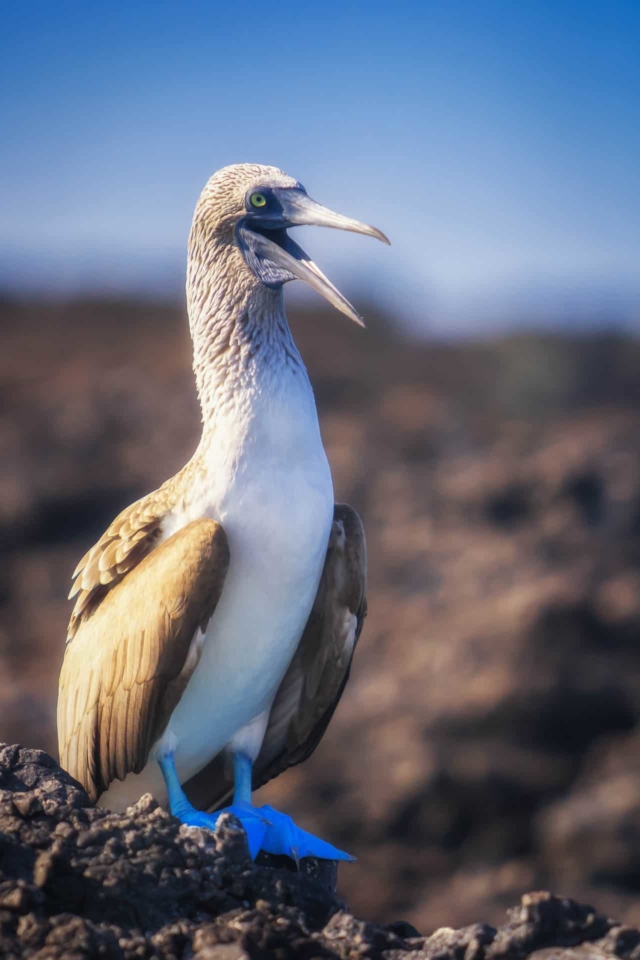
The male boobies show off their florescent blue feet in an elaborate mating ritual and are quite proud of their colorful tootsies. Don’t you just love saying the word booby?
Did you know the word booby comes from the word BoBo, which means foolish clown? Now we know where Bobo the clown got his name!
Red Footed Booby
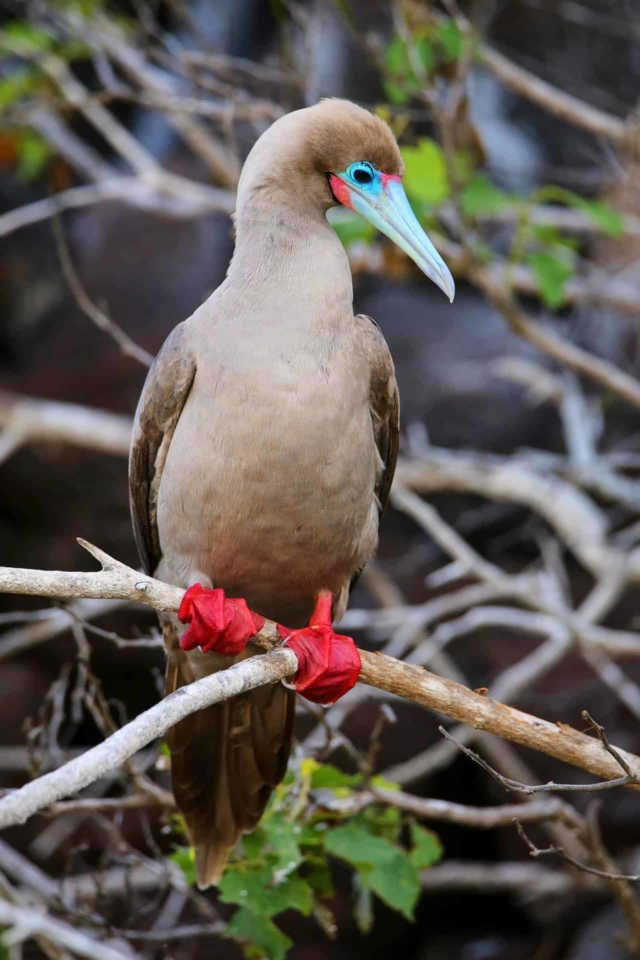
Keep an eye out for the red footed booby as well. Its red feet stand out against its blue bill and pouch. You have to have a sharp eye though, because they are often mistaken for the Nazca booby. The Nazca booby doesn’t have colourful appendages like its cousins.Trust me, it is more difficult than it looks to spot the bright red and blue feet.
If you are a bird lover, Genovesa Island is a must-visit. It’s known as bird island and besides spying the Red Footed Boobies and Nazca booby, you’ll also see yellow-crowned lava herons, the short eared owl, Galapagos Hawk, and puffball chicks. One cool fact is that the short eared owl hunts at opposite times as the Galapagos Hawk to avoid competition. Just another example of the adaptation of wildlife in the Galapagos.
Galapagos Penguins
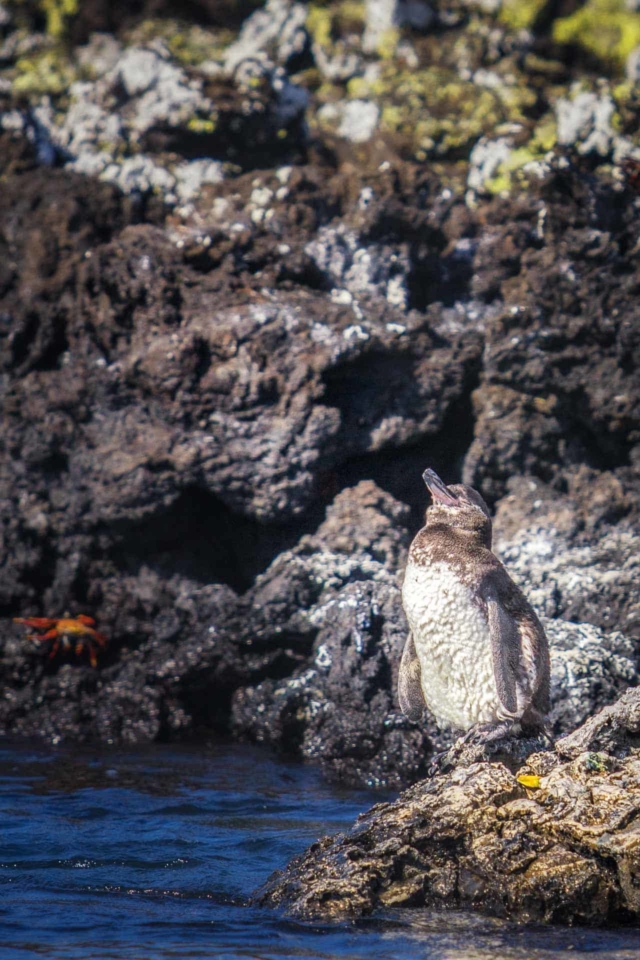
It is exciting to see a penguin anytime, but a Galapagos Penguin is the only penguin found north of the Equator, so it is doubly exciting! These tiny penguins grow to a height of about 19 inches.
Sadly these cuties are an endangered species with less than 2000 Galapagos penguins left with their numbers declining due to climate change and the introduction of animals on the Galapagos such as dogs and cats that carry disease.
Like so many species in the Galapagos Islands, Galapagos penguins are endemic only to the region. The Galapagos penguin can be found on Fernandina Island and Isabella Island. While kayaking in the Galapagos in Isabella Island we saw a lot of them, but you can spy them on other islands as well
Galapagos Marine Iguana
One of the most unique animals in the Galapagos that we saw was the Galapagos Marine Iguana. We couldn’t believe our eyes when we spotted one feeding on the bottom of the sea while snorkeling.
The marine iguana is only found in the Galapagos and it feeds on underwater algae and seaweed. Charles Darwin called them hideous, but maybe we have a thing for ugly because we thought they were quite cute!
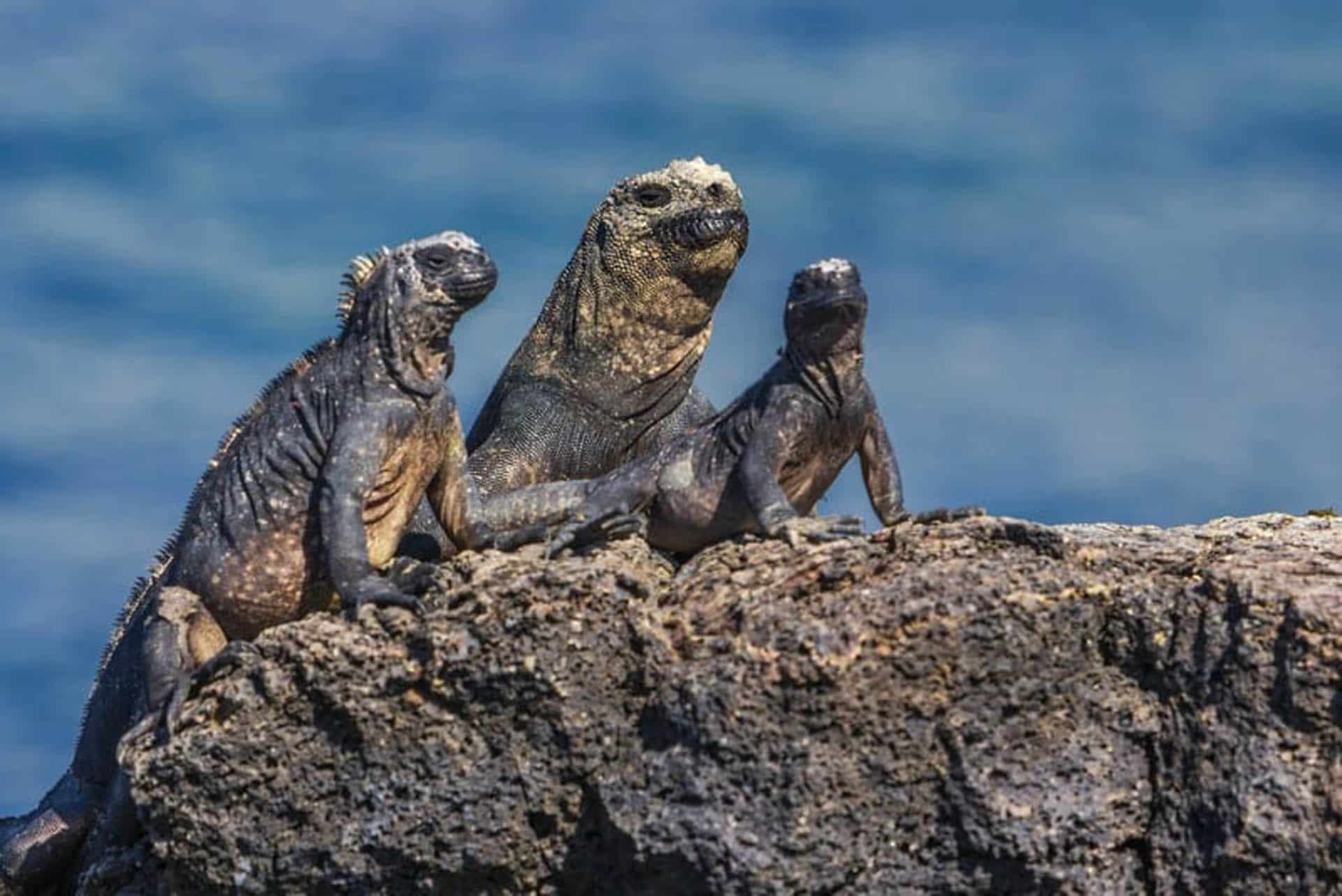
Marine Iguanas are known for their white heads which are caused by sneezing out sea water creating a crown of salt upon their top. I could watch the marine iguana all day. They are so still as they bask in the hot sun. You can tell the just relish every minute of it.
Galapagos Land Iguana
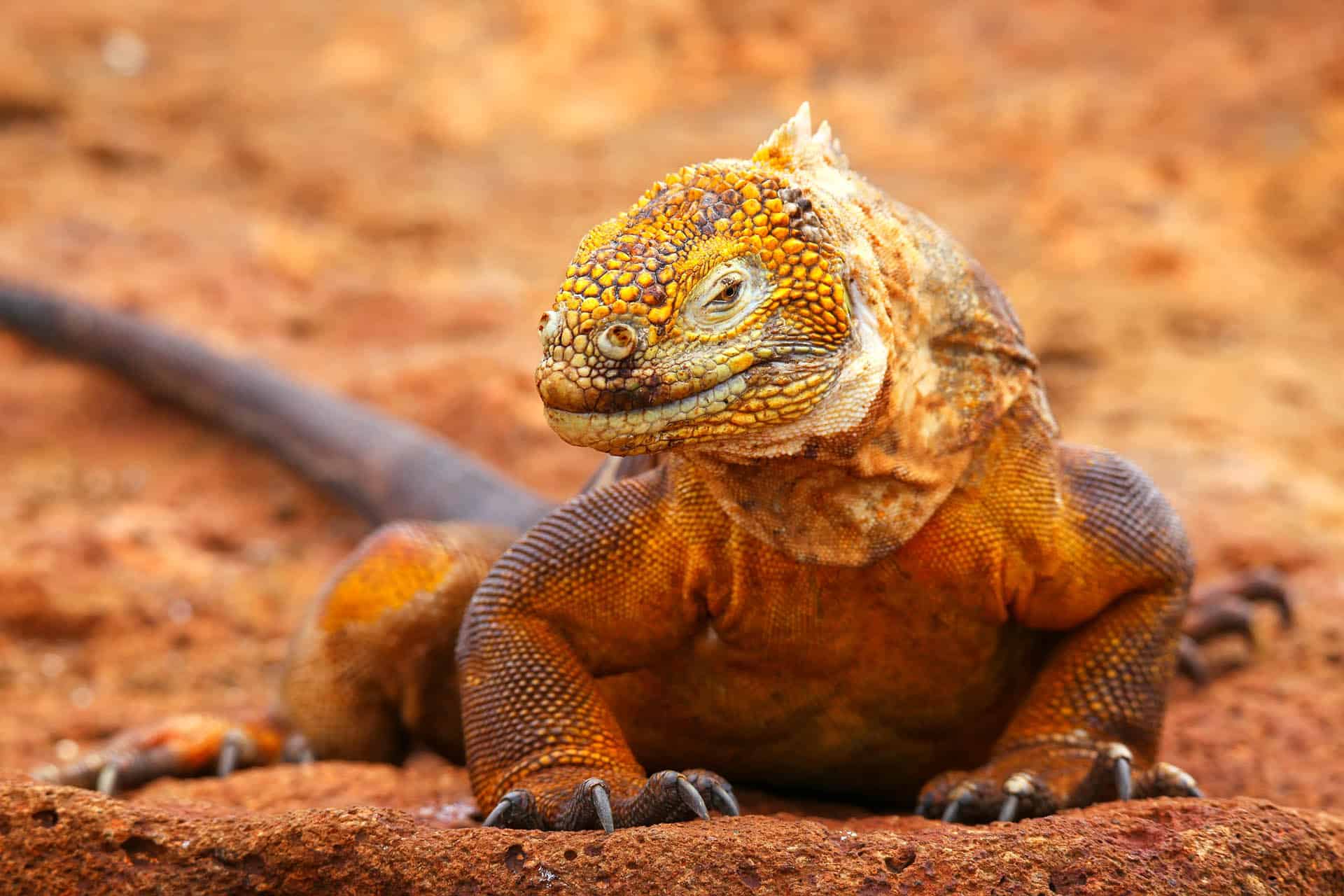
There are three land iguanas endemic to the Galapagos Islands, the Santa, The pink Galapagos, and the plain old Land Iguana itself.
How do you tell them apart?
- The Land Iguana is yellow with black and brown blotches.
- The Pink Iguana is, you guessed it! Pink with black or brown splotches and are only found on Isabella Island.
- The Santa Fe Land Iguana is found only on the island of Santa Fe in the Galapagos
Lava Lizards
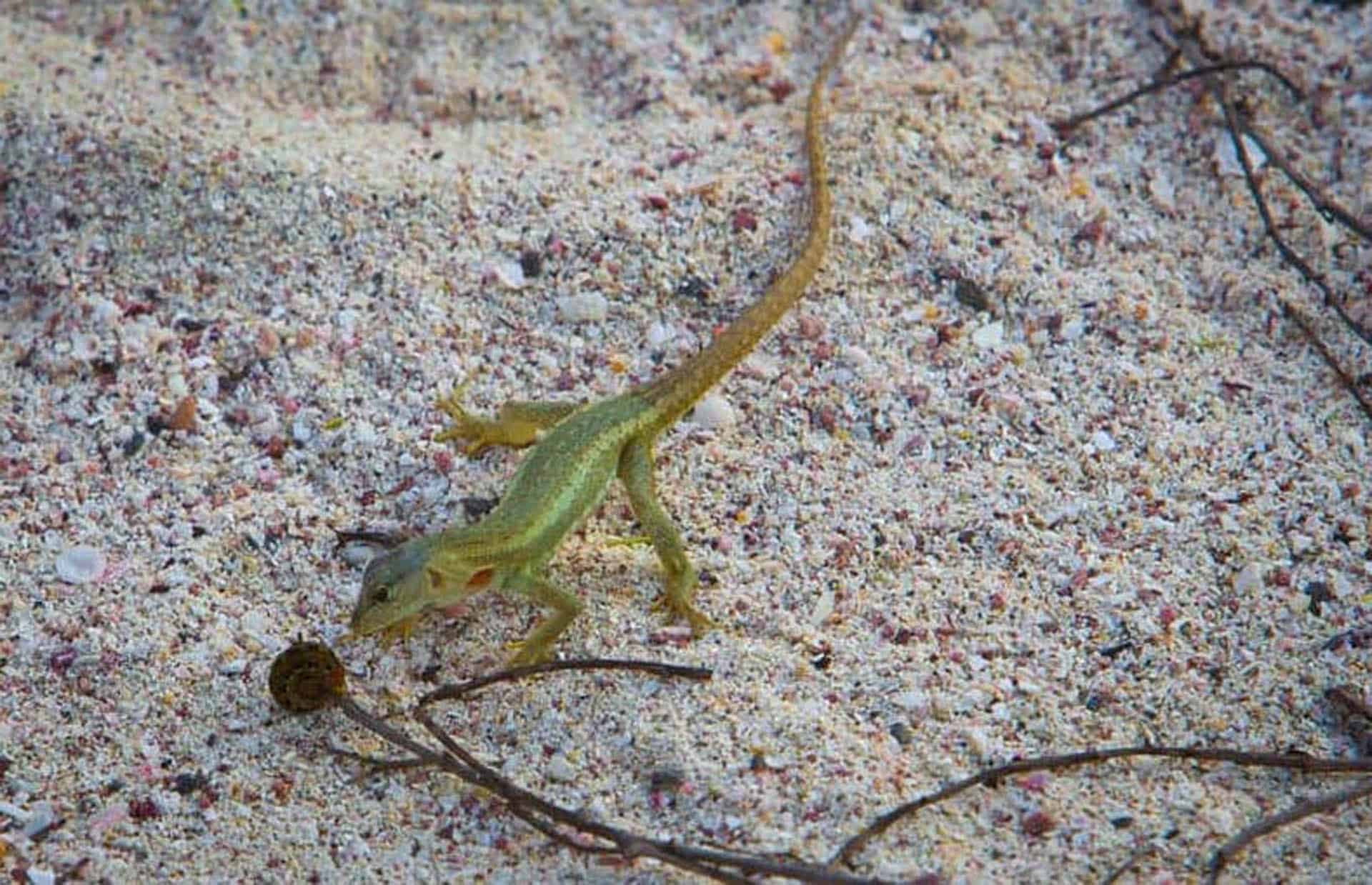
While on the island of Isabella, an amazing hike is to the active volcano of Sierra Negra. It is here that we were able to spot the Galapagos Lava Lizard. These small lizards can grow up to a foot-long. But there are 5 other species of lava lizards on the Galapagos and you will see them everywhere. They skitter around and hang out in large groups. Oh the conversations they must be having!
Galapagos Shark
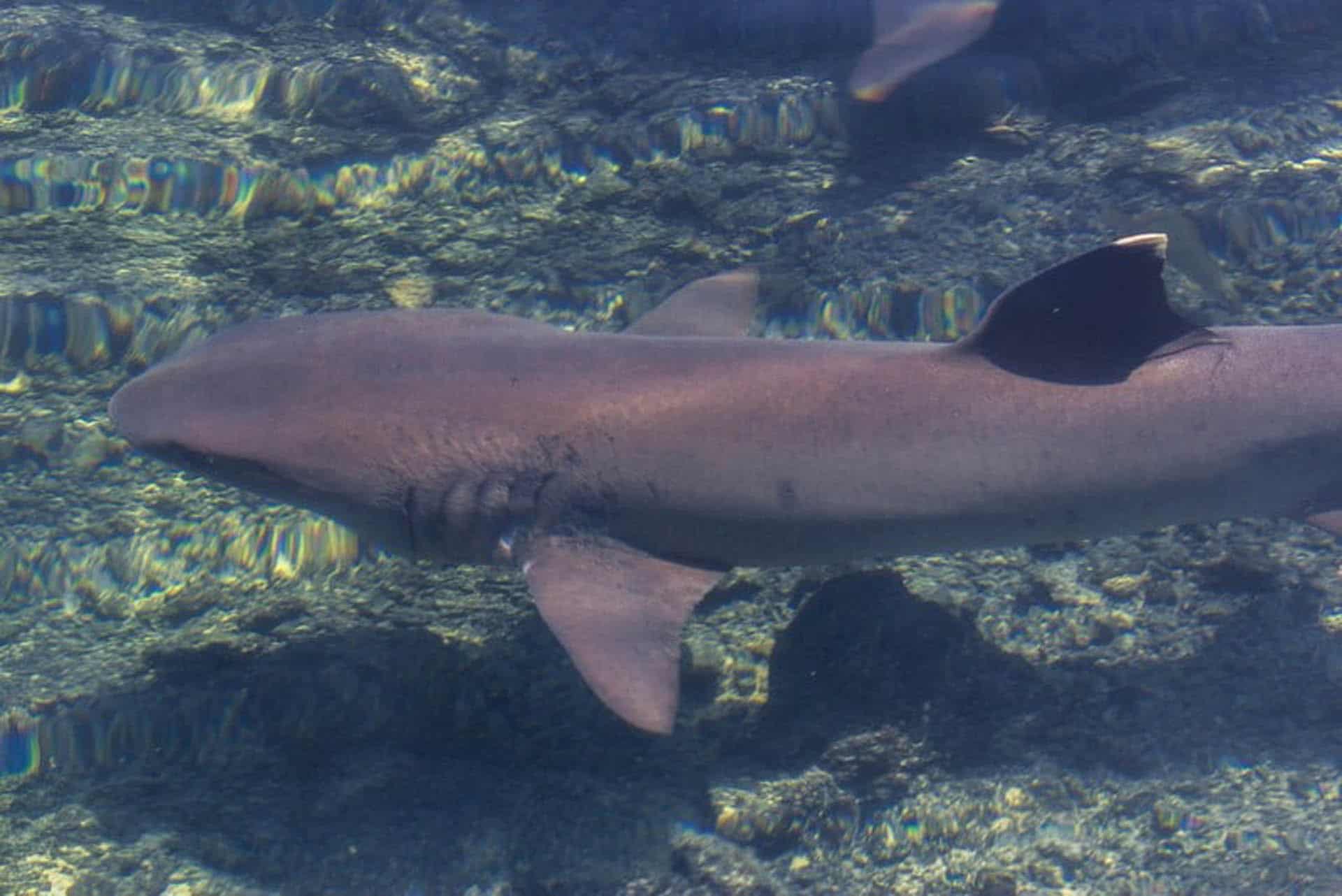
We snorkeled with Galapagos Sharks and saw several in the water. As our guide said, the Galapagos Shark is well fed, they are the top of the food chain in the Galapagos. So we had nothing to worry about. They didn’t pay any attention to us as they fed around Kicker Rock.
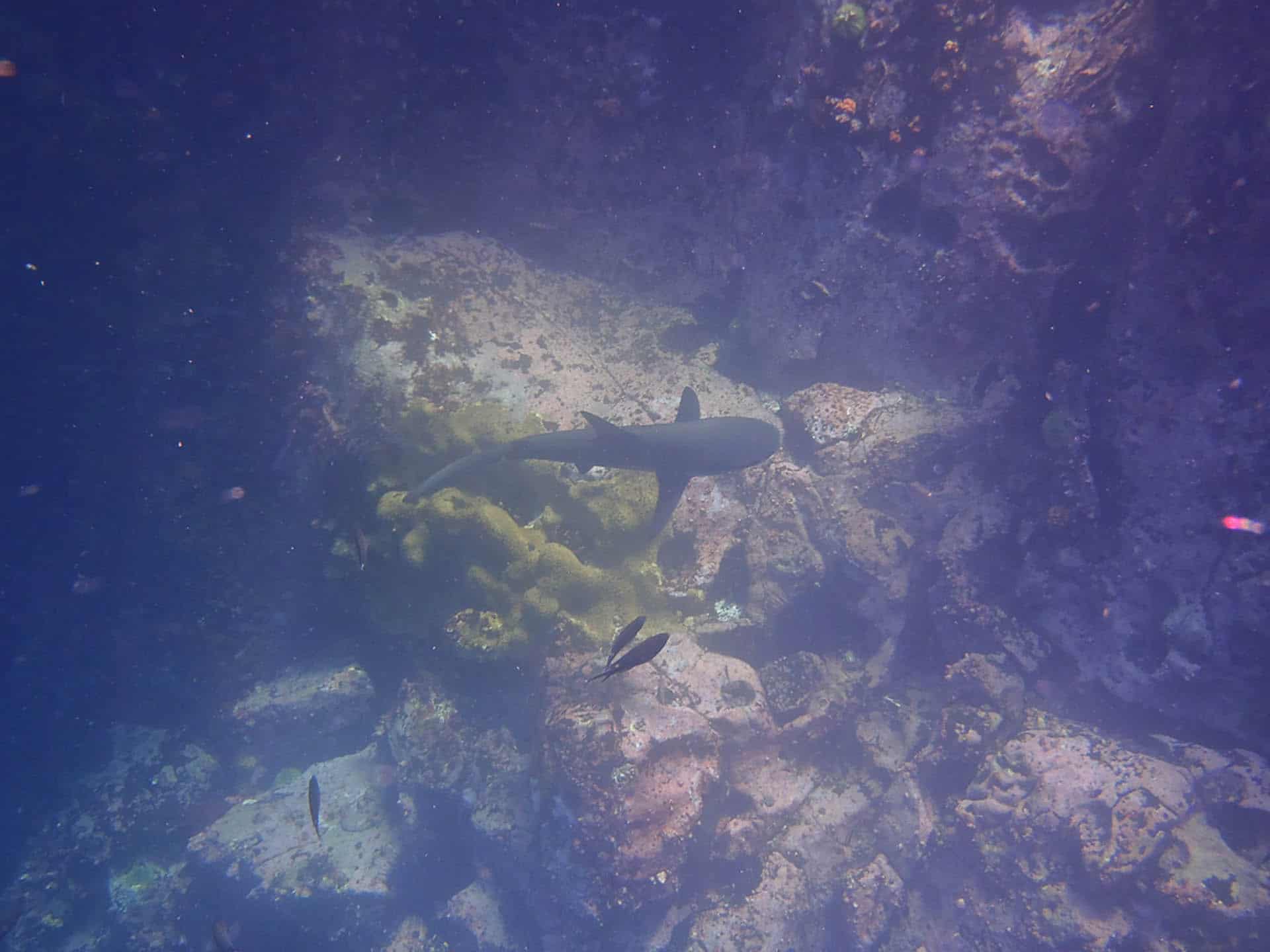
The Galapagos shark is similar to the reef shark, so we took our guide’s word that we were looking at Galapagos Sharks. They can grow to 12 feet in length and while snorkeling with them, they kept their distance staying below us only coming up for a quick peak now and then.
Galapagos Sea Lion
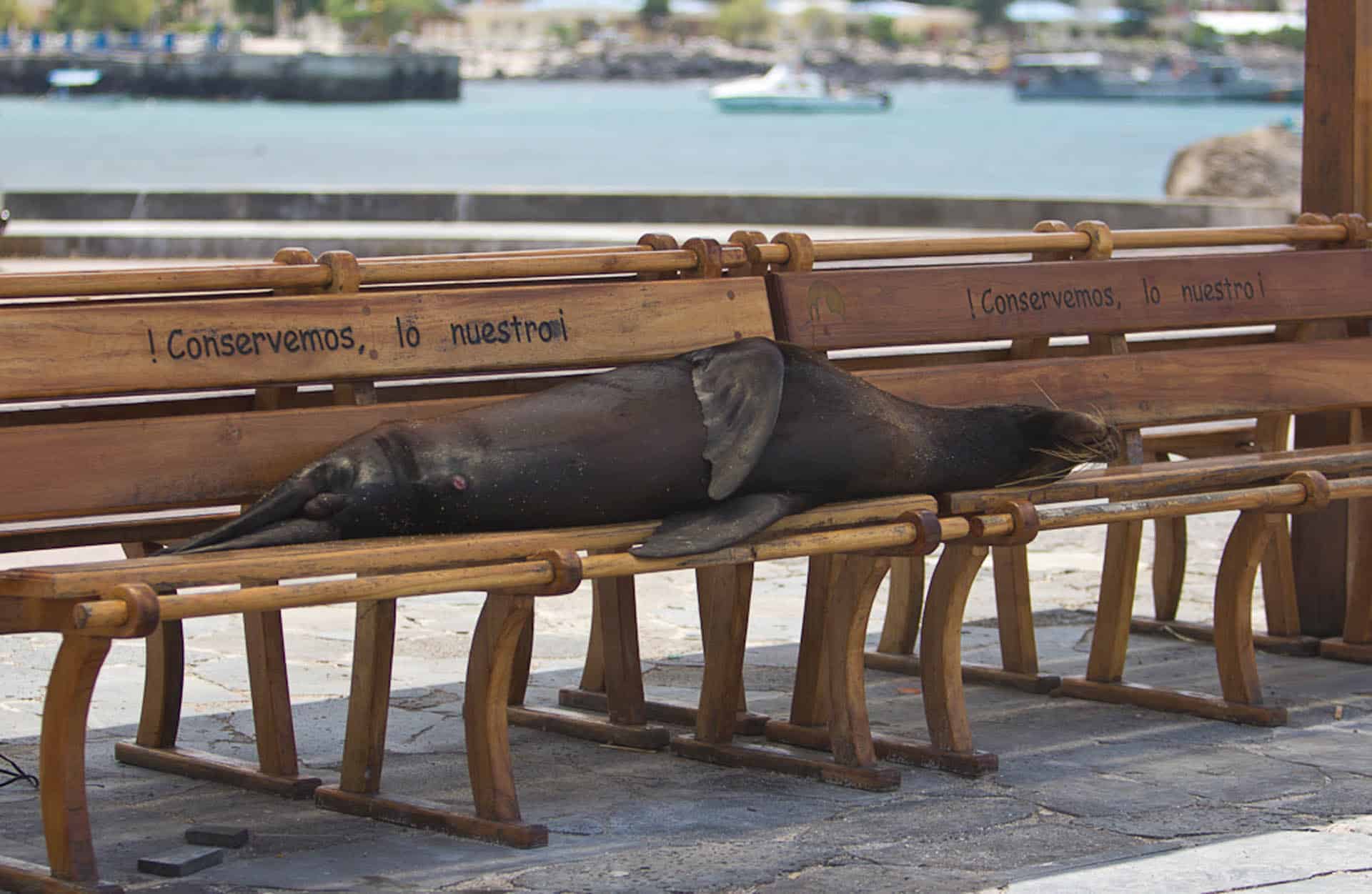
You will not have as much fun anywhere as you will swimming with sea lions in the Galapagos. This species of sea lion can also be found on the coast of Ecuador, but they are in their greatest numbers here.
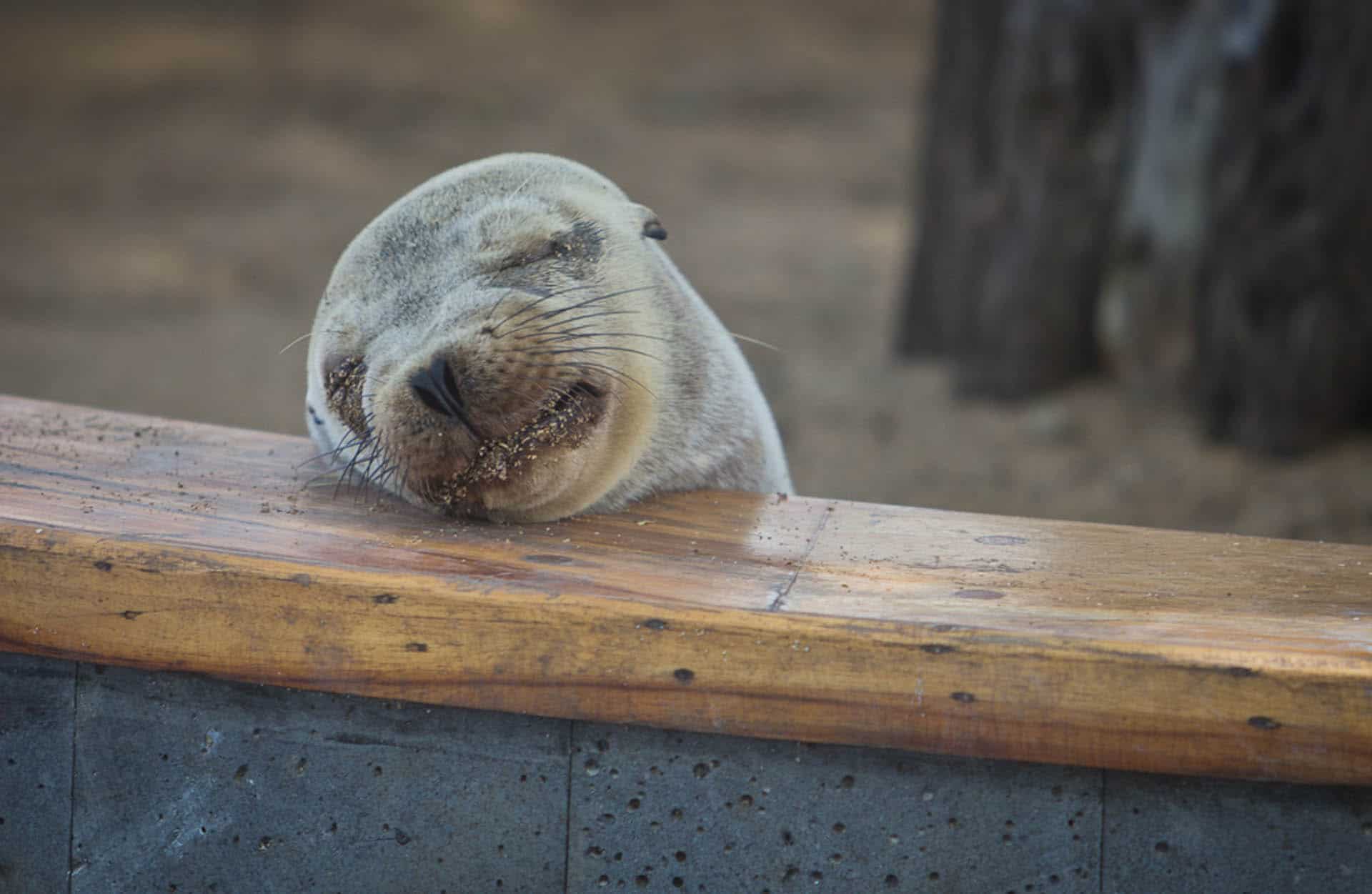
You’ll see them hanging out on park benches on San Cristobal Island. They are cute, but don’t approach them on land, they can be vicious.
Also when swimming Galapagos sea lions, be sure to keep your distance and let them approach you. They’ll definitely stop by to say hello.
Green Sea Turtle
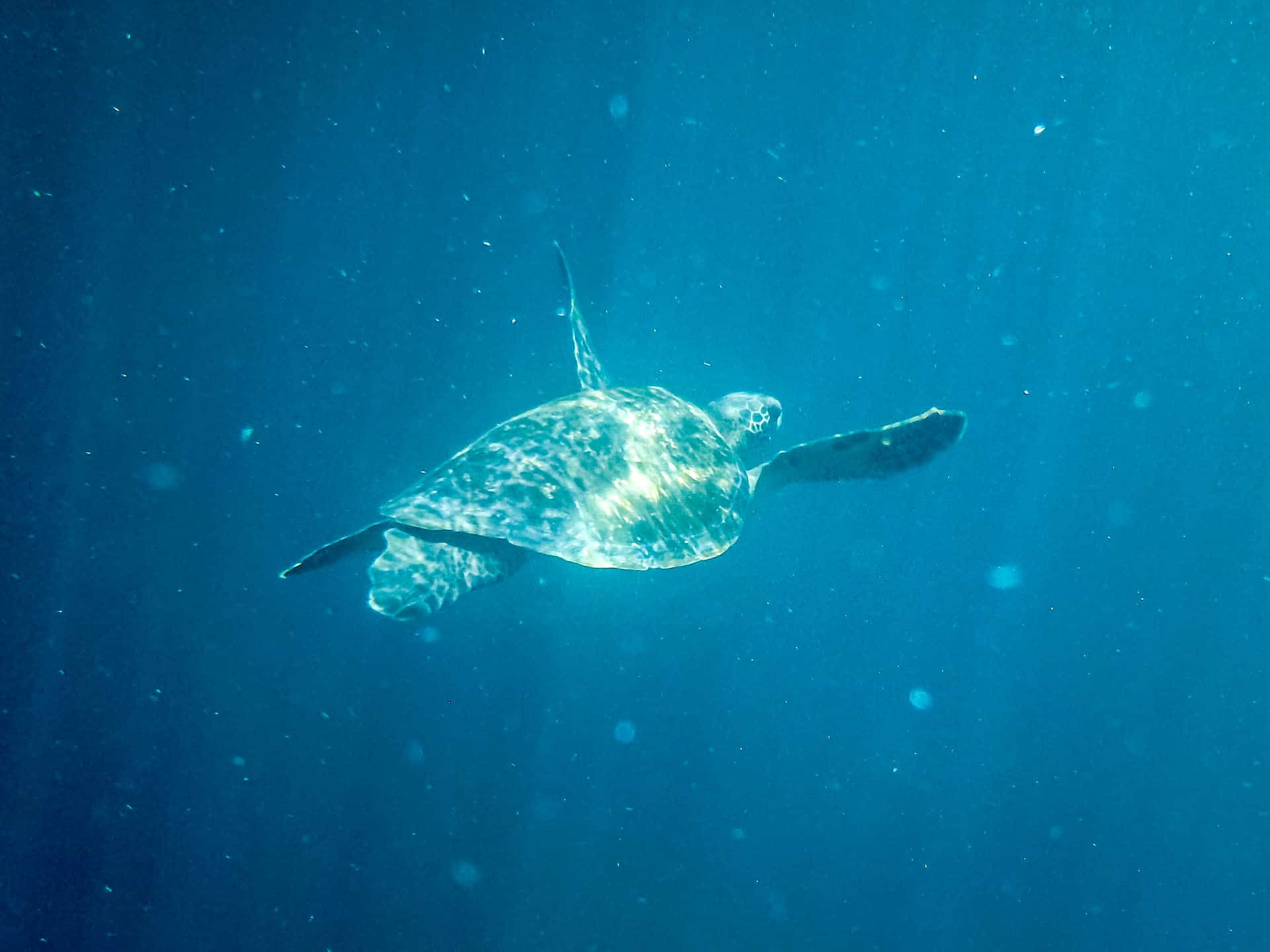
One of our favorite things to do in the Galapagos Islands was to go snorkeling. The water is a bit chilly, so we recommend wearing a shorty wetsuit. We could spend longer in the water than people in our group because we had a bit of warmth and trust me, this once in a lifetime experience is something you don’t want to rush!
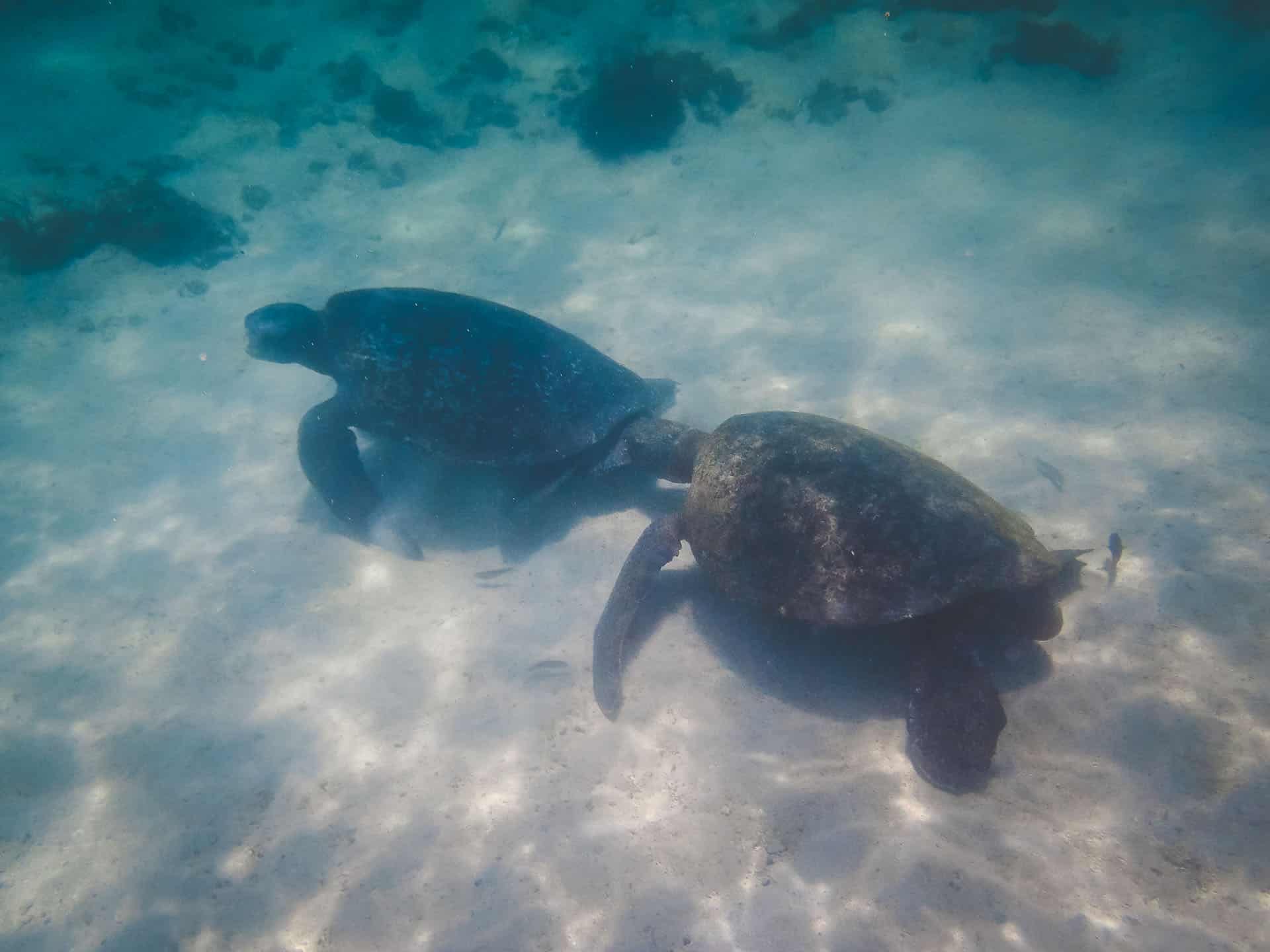
These are the only species of turtle to actually nest in the Galapagos. Sadly the turtles of the Galapagos Islands are under threat due to fishing nets, plastic, light pollution and wildlife that is not endemic to the island like cats, pigs and rats.
Frigate Bird
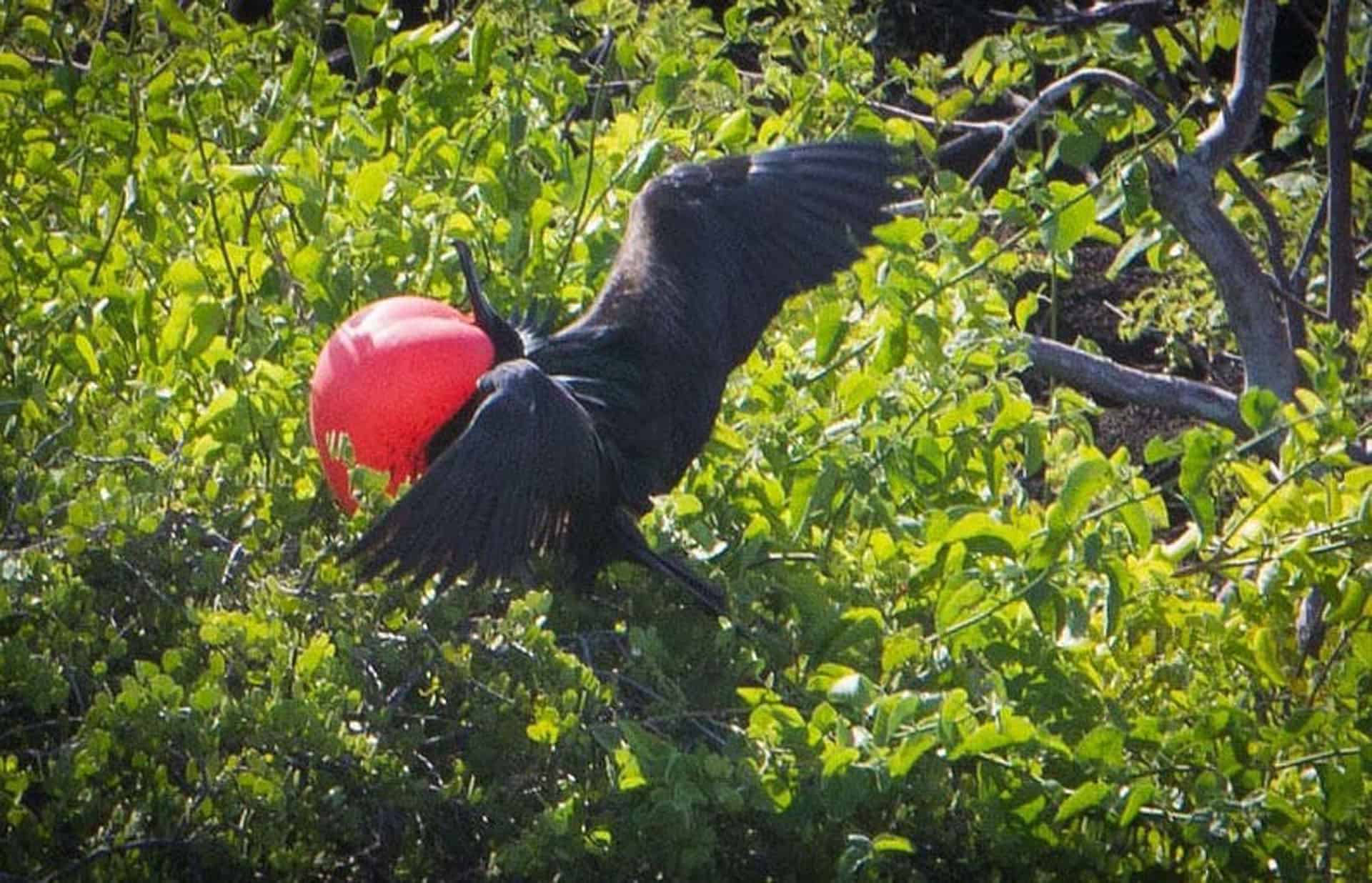
Frigate birds can be found throughout South America, but that doesn’t make it no less exciting when you see one. The Galapagos Islands have to species of Frigate Birds, The Great and the Magnificent Frigate Bird. And the names are suiting! It is magnificent to see them.
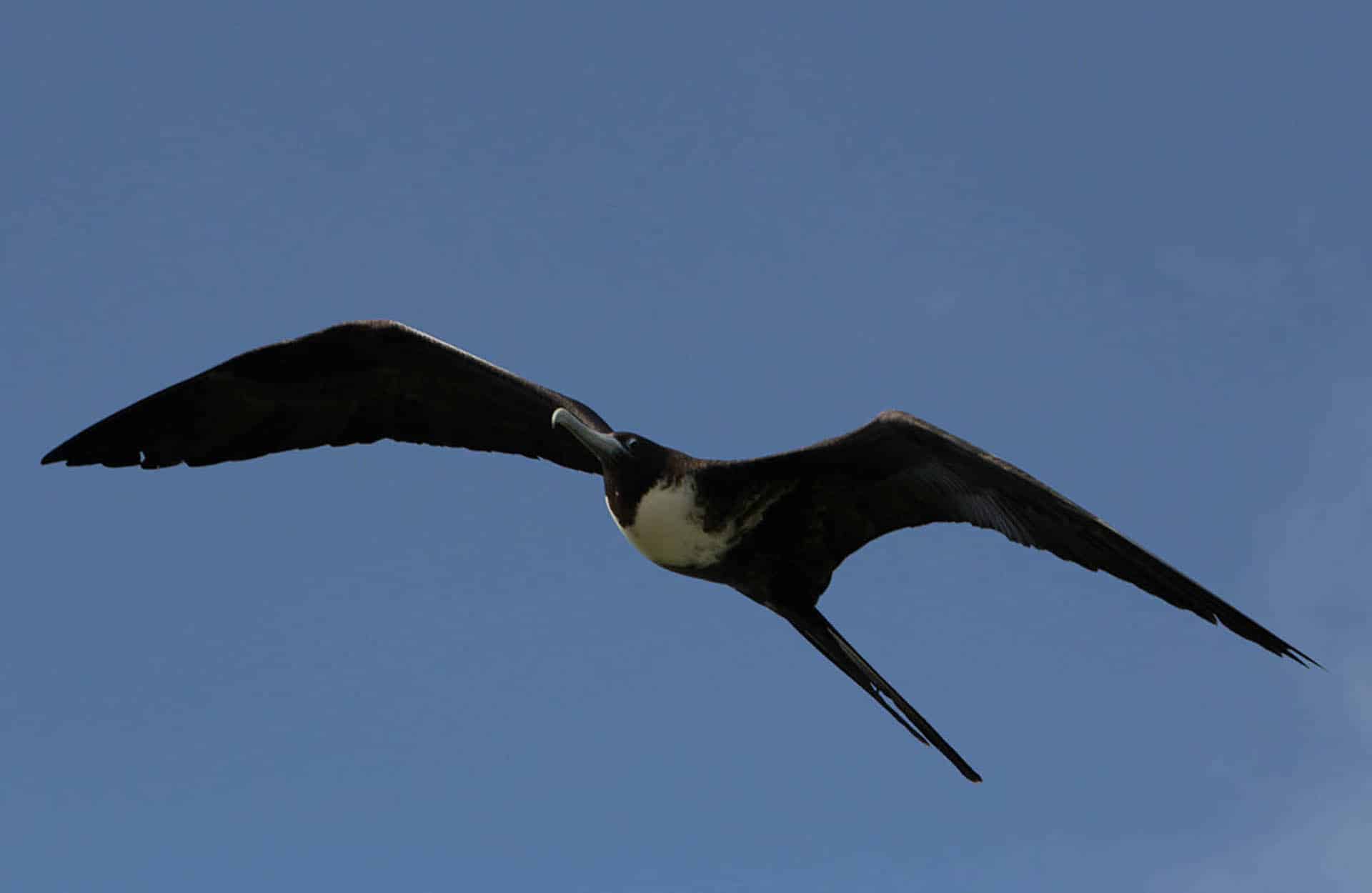
During mating season, you’ll see the males red chests puffed out to attract the females.
Sally Lightfoot Crab
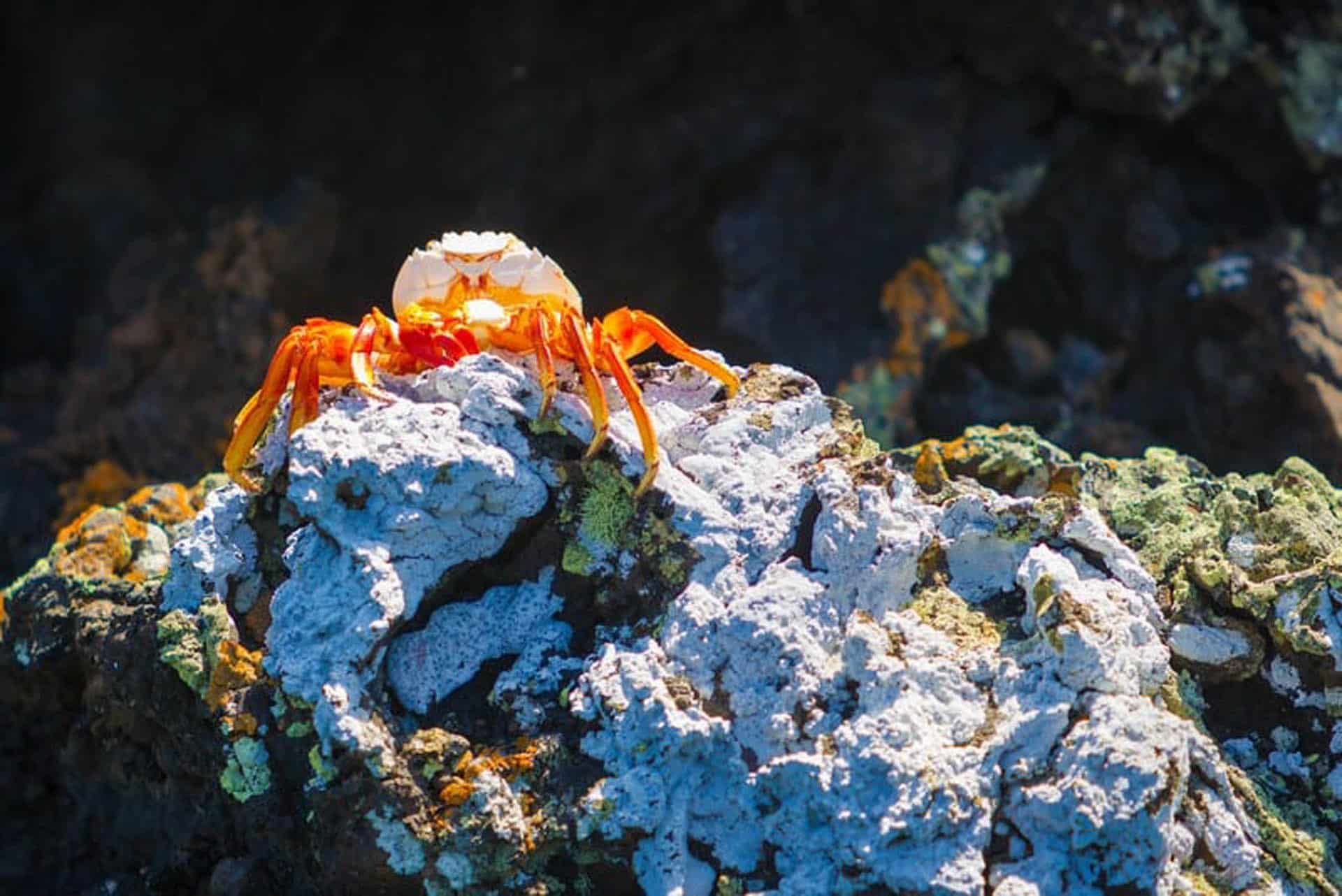
The Sally Lightfoot Crab is a colorful crab that you’ll have no trouble spotting when traveling through the Galapagos Islands. These crustaceans bright red, orange, and yellow are fun to watch as they scamper around the islands. These scavengers that will eat just about anything including eating the ticks off of marine iguanas.
Galapagos Fur Seal

Galapagos fur seals (Arctocephalus galapagoensis) are another animal on the endangered list that is starting to make my heartache as I write this post. The Galapagos Fur Seal is the smallest seal in the world that split its time 70/30 between land and water. The Arctocephalus Galapagoens is usually hanging out among rocks making its way to the shade during the day.
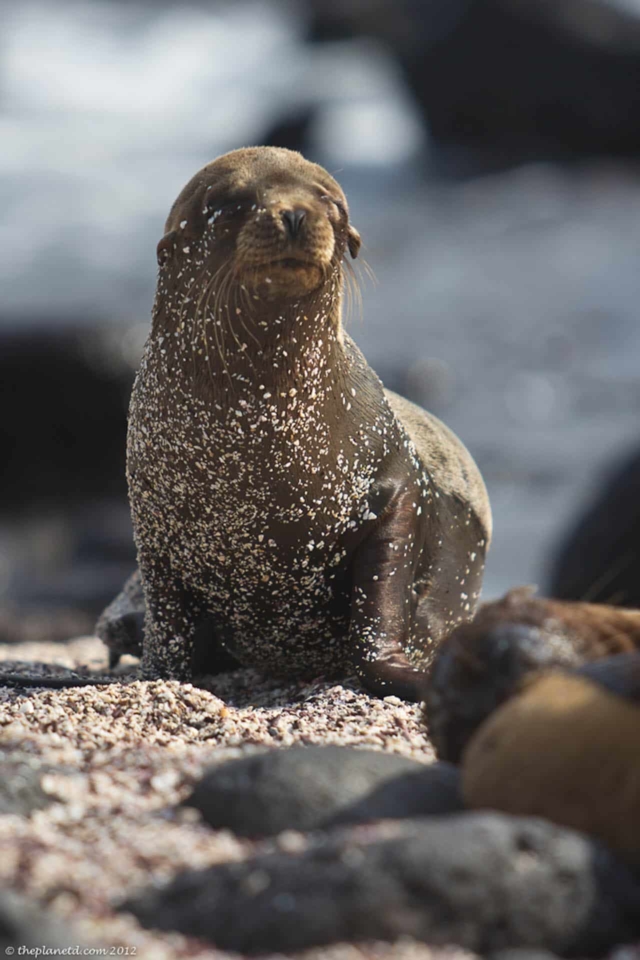
It can be difficult to tell a fur seal from a sea lion, but they have shorter heads and they are smaller. Plus, you probably won’t find them in the water during the day. The best places to spot them is in the bay at Santiago Island and in Darwin Bay in Genovesa.
Galapagos Flamingo
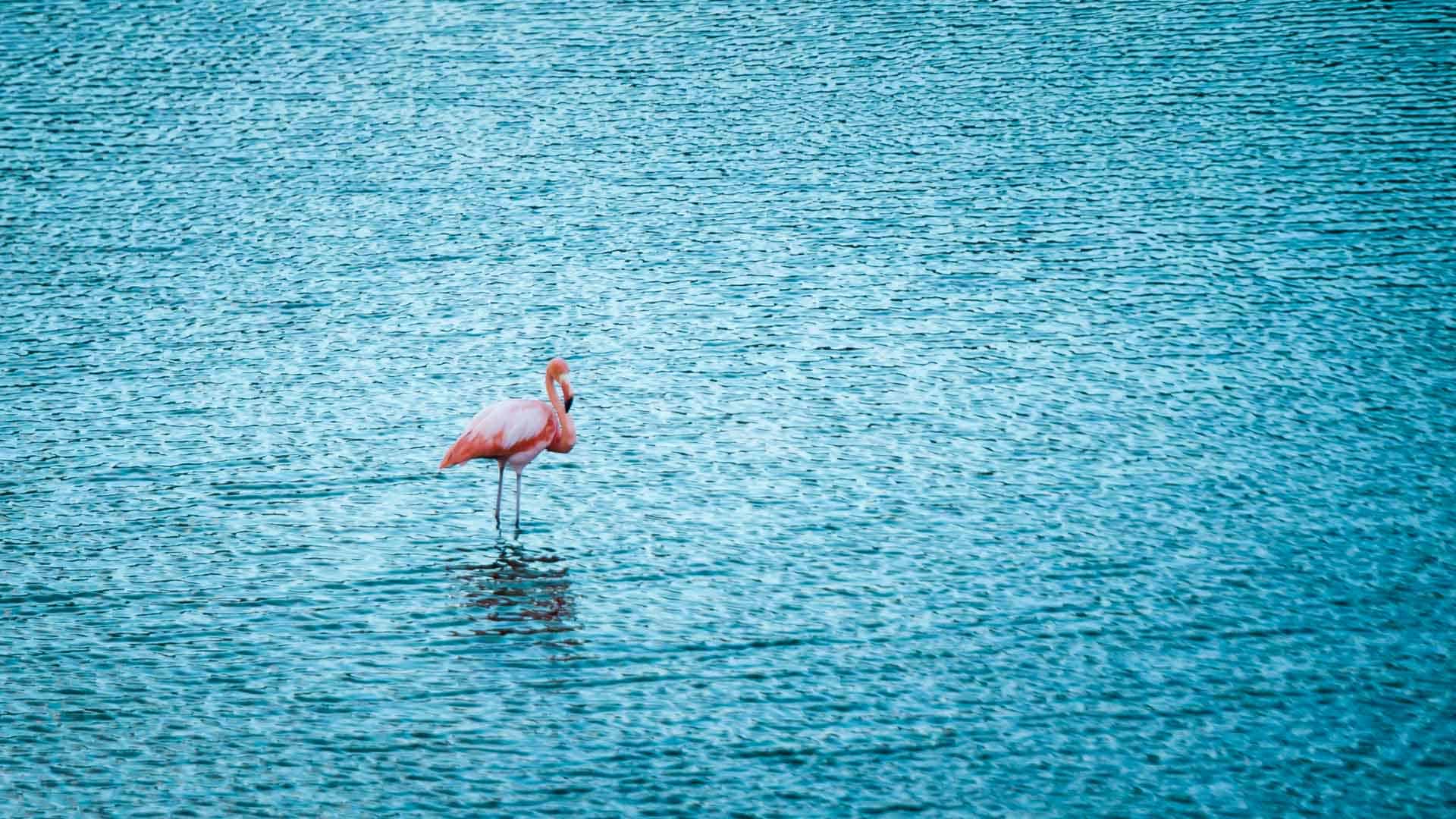
Galapagos flamingoes (aka American flamingoes) are the smallest species of flamingoes on earth but they are no less exciting to see. Flamingoes are excellent fliers and travel throughout the Galapagos isalnds. Unlike spotting flamingoes in the Kenya where you’ll see thousands, the Galapagos Flamingoes run in smaller circles. Like many of the bird species in the Galapagos Islands, the Galapagos flamingo mates for life.
Not all islands can accommodated the diet of the Galapagos Flamingo so you will have to go to Santa Cruz, Isabela Island or Santiago.
Darwin’s Finches
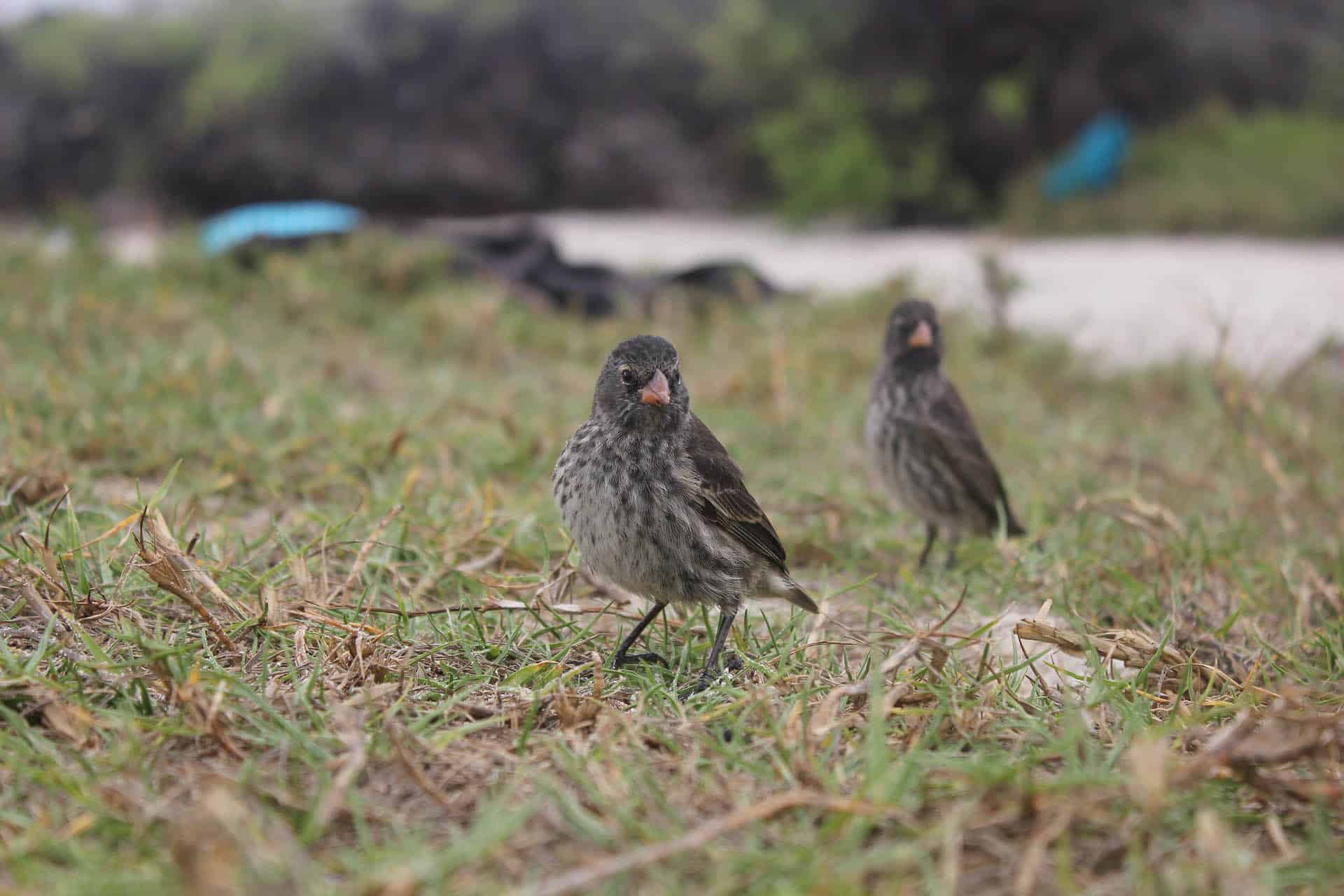
You have probably heard of Darwin’s Finch as they played a key part in Charles Darwin’s theory of evolution. There are 14 species of Darwin’s finches in the Galapagos each with distinctive beak sizes. I couldn’t personally tell them apart, but keen bird waters adore them. The Darwin Finch can be found all around South America as well.
Flightless Cormorant
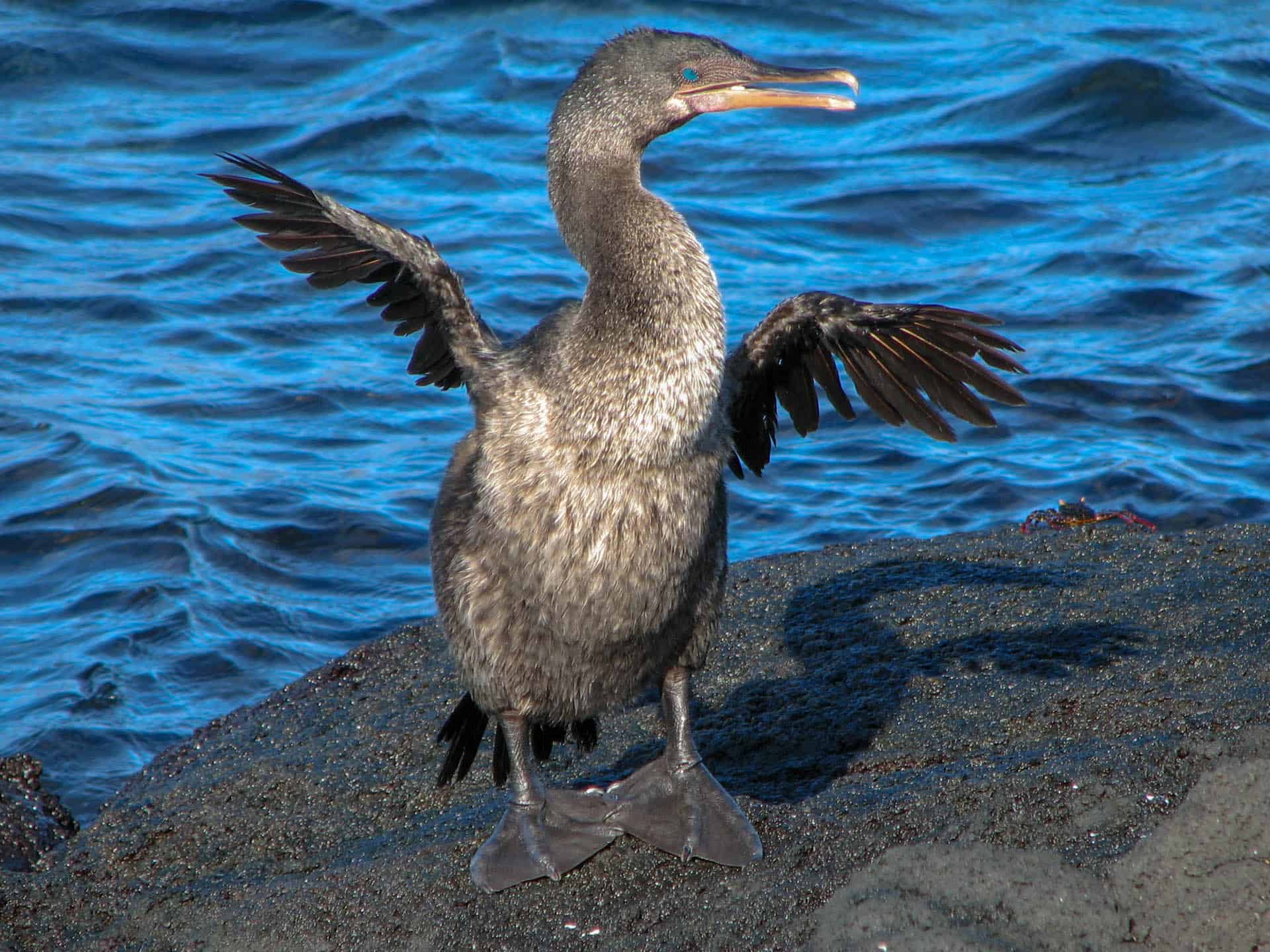
The Galapagos Flightless Cormorant is the only Cormorant in the world known to have lost its ability to fly. Sadly like much Galapagos wildlife, flightless cormorants are endangered with an estimated total of less than 1000. For centuries they thrived in the Galapagos because food was so plentiful. You can spy these unique creatures on Isla Fernandina.
Waved Albatross
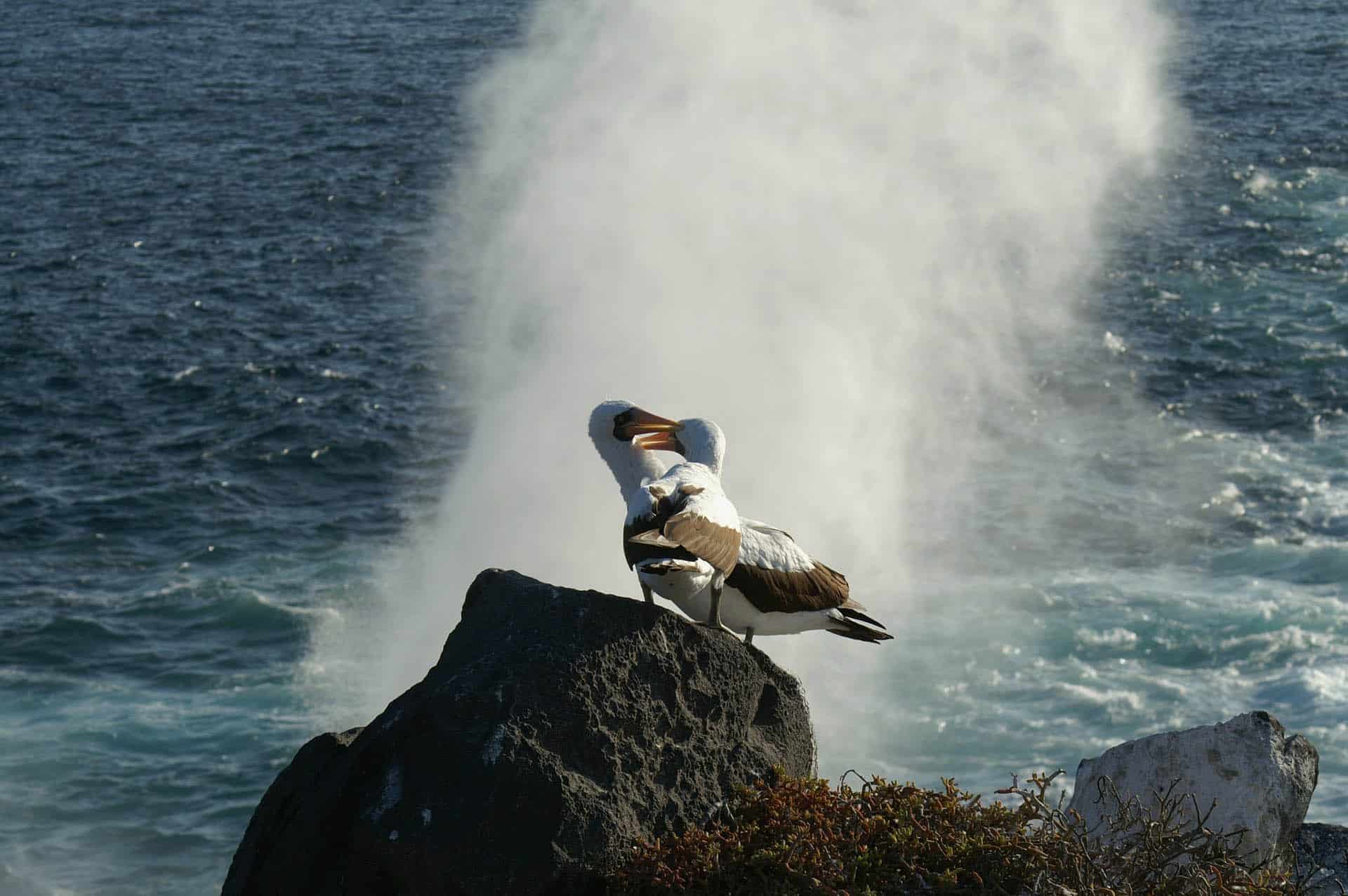
Also found off the coast of Ecuador, the Waved Albatross has the largest wingspan of the bird species in the Galapagos. They only come to the Galapagos for the breeding season from and you have the best chance of seeing them on Espanola Island.
During their mating season from April to December, these birds put on an elaborate courtship ritual circling one another and clacking their beaks together. Once they mate, they mate for life but sadly, these species are under threat as well.
And that my friends is the amazing wildlife of the Galapagos Islands! Pretty spectacular isn’t it? If you get the chance to go to the Galapagos, be sure to get in the water to view the marine life from below. And make sure to do some hikes inland to explore the reptiles and mammals. It was the most spectacular journey. We can only imagine what the crew of the HMS Beagle must have felt.
Animal Interaction and Safety
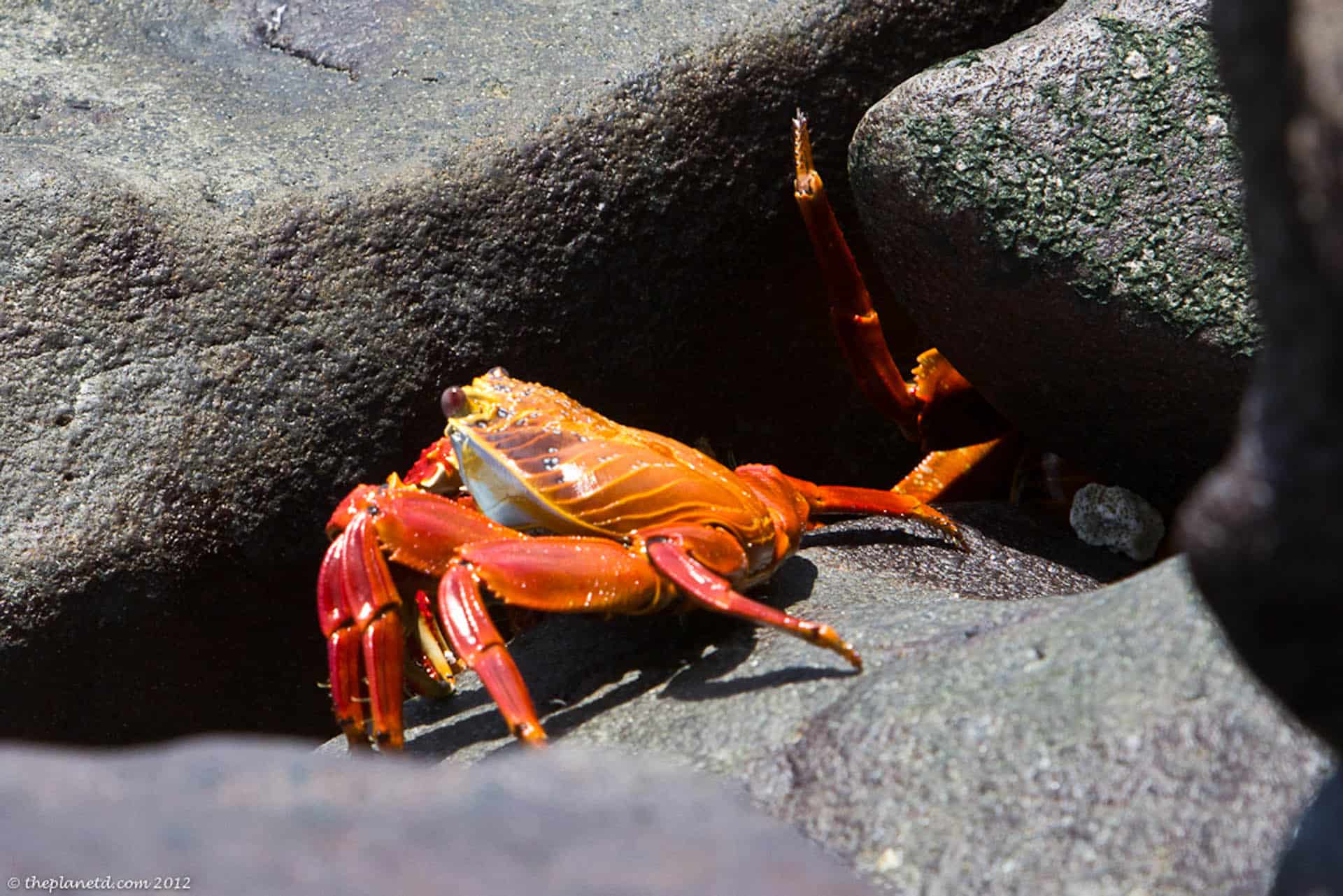
Galapagos animals are not afraid of humans and visiting the islands offers a unique opportunity to see these creatures up close. You must stay at least 3 meters away from wildlife as to not disturb them, but if they choose to come up to you, it is okay. As long as you don’t touch them.
When snorkeling, follow your guide’s instruction and do not reach out to touch any marine life. Keep an eye out for bull. Sea lions are playful but they can be vicious. Never chase sea turtles or try to touch them.
Where are the Galapagos Islands?
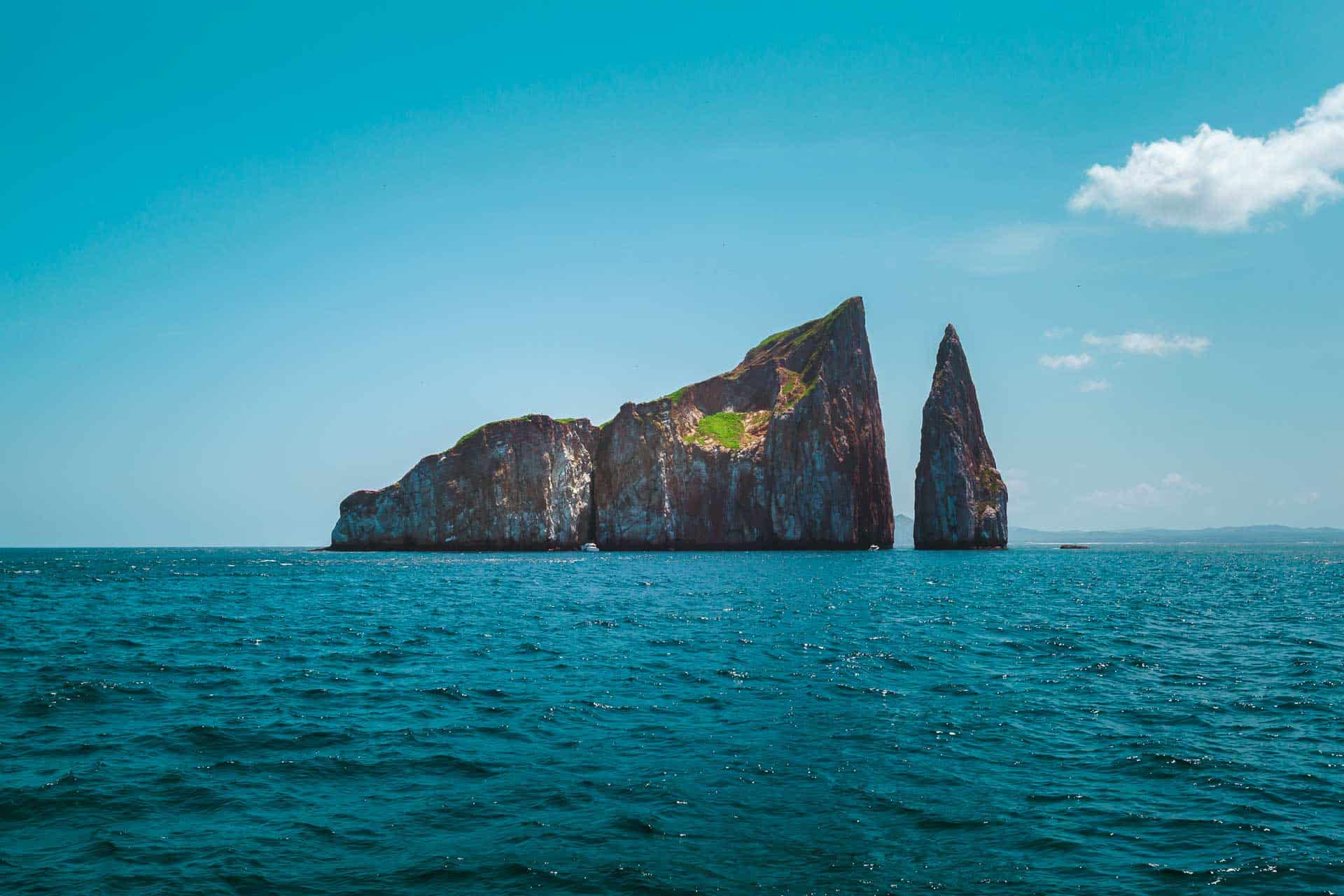
The Galapagos Islands are as isolated as it gets in the center of the Pacific Ocean with the closest landmass being 600 miles away! Said landmass would be Ecuador.
There are 13 Islands in the Galapagos. Four islands are inhabited and the rest have no human settlements and do not allow overnight visitors. There are more than 100 islets, rocks and smaller islands that you can tour by boat.
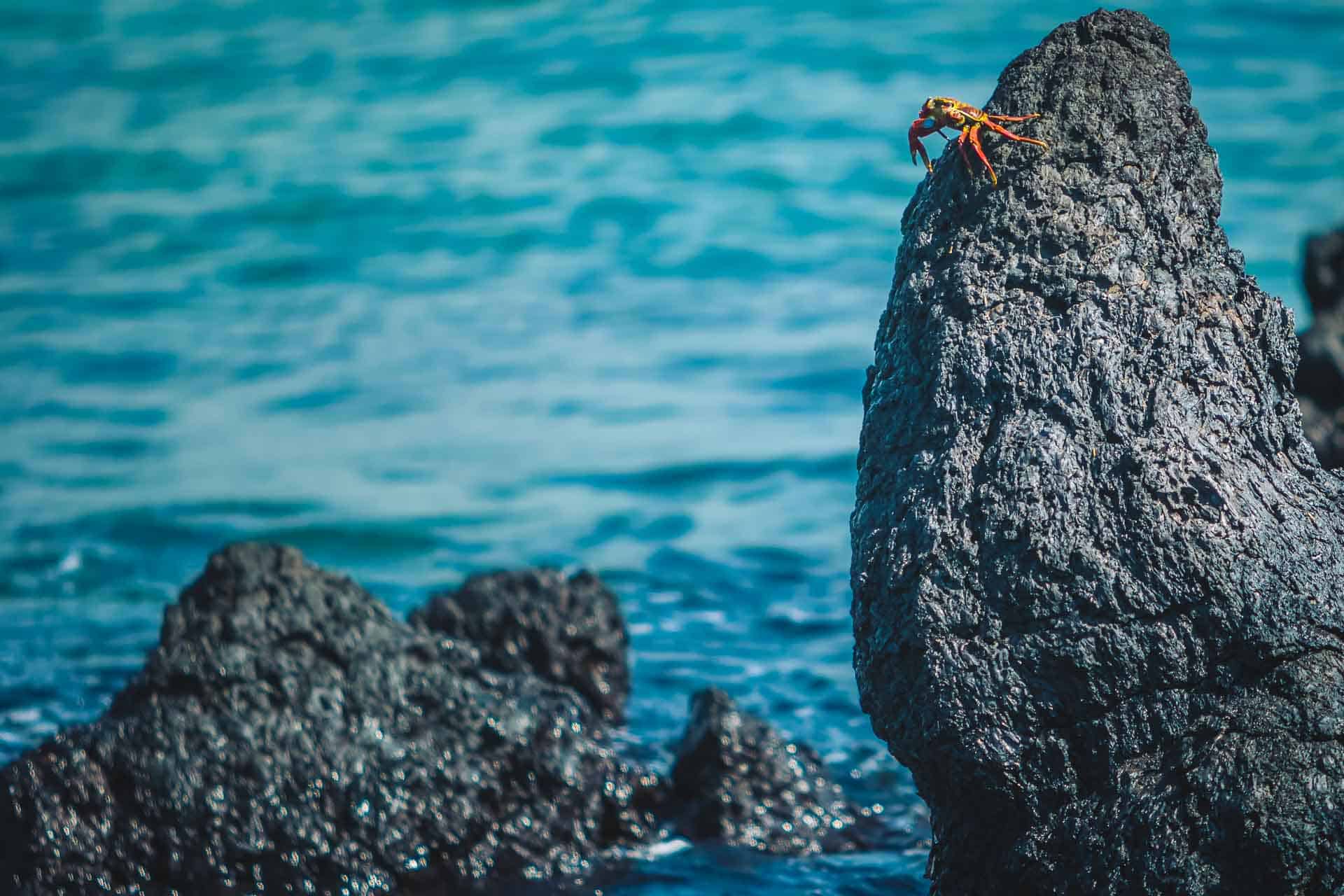
Inhabited Islands of the Galapagos are, San Cristobal, Santa Cruz, Isabela, and Floreana. You can stay over on these islands.
And these are the greatest animals of the Galapagos Islands. Have you been to the Galapagos? Did we miss any? Let us know in the comments.
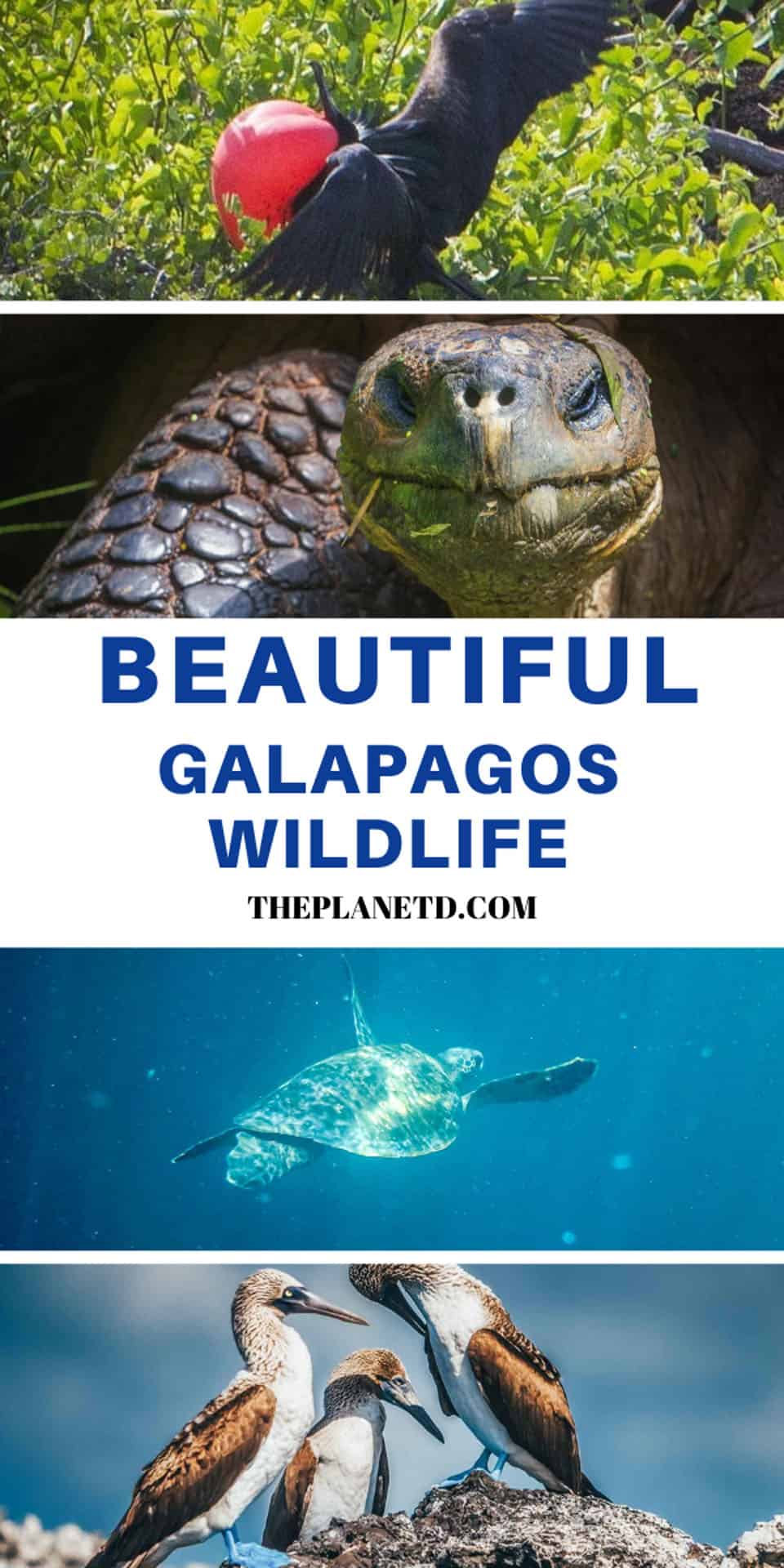
Read more about great animal encounters in the world:

